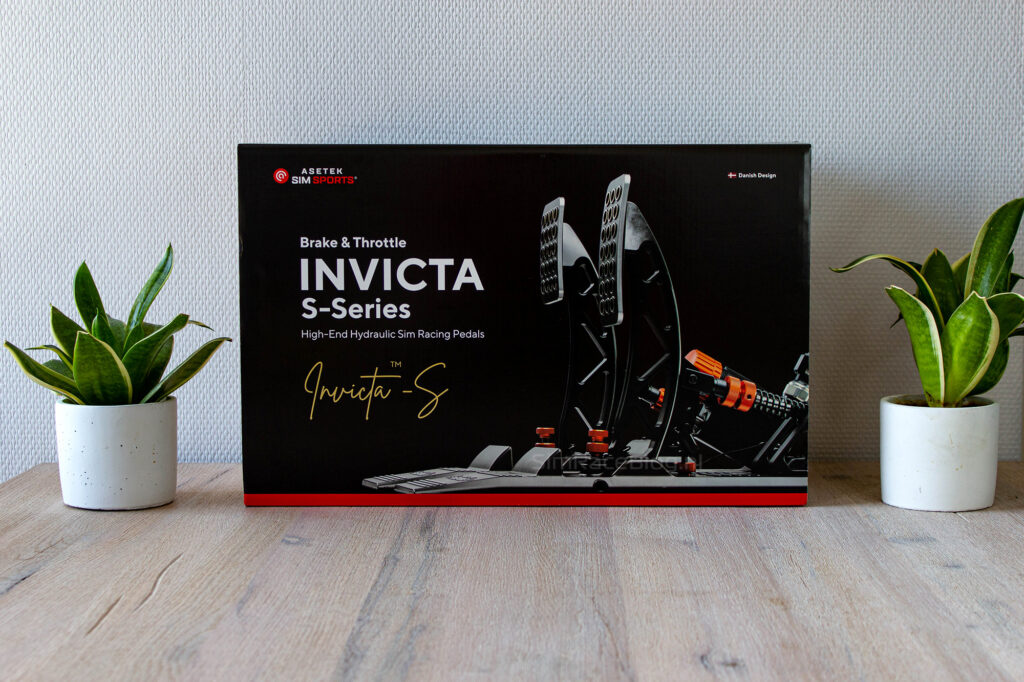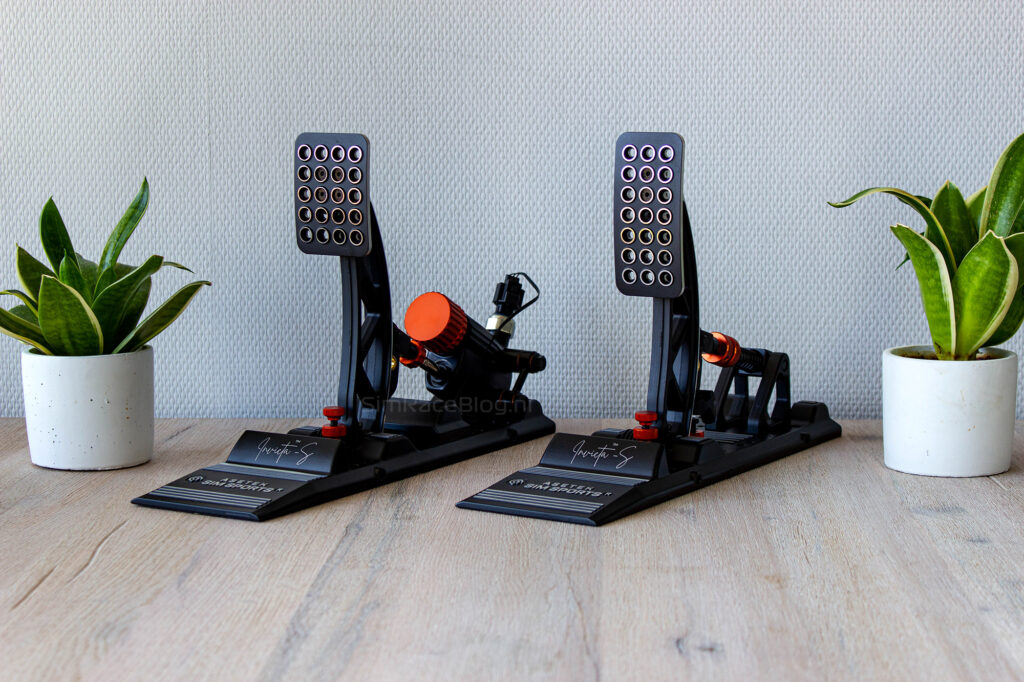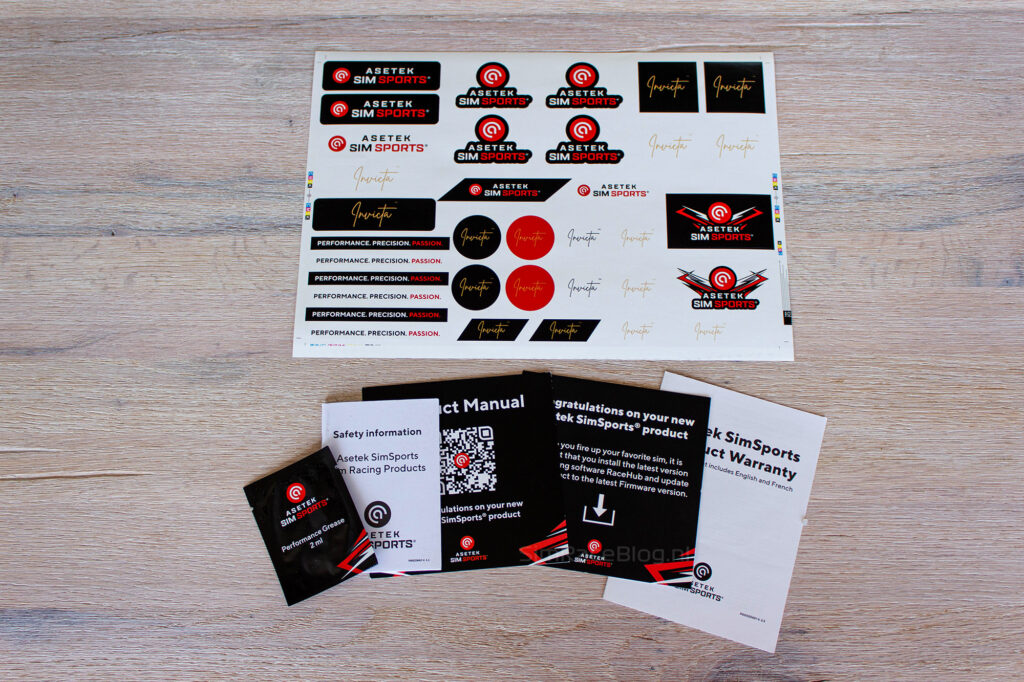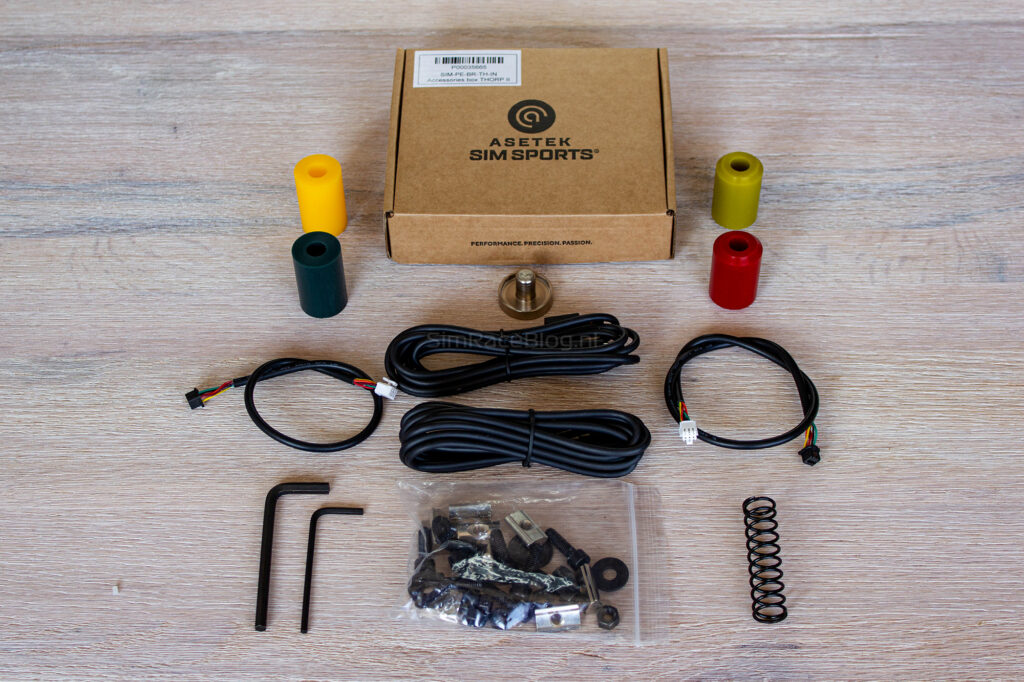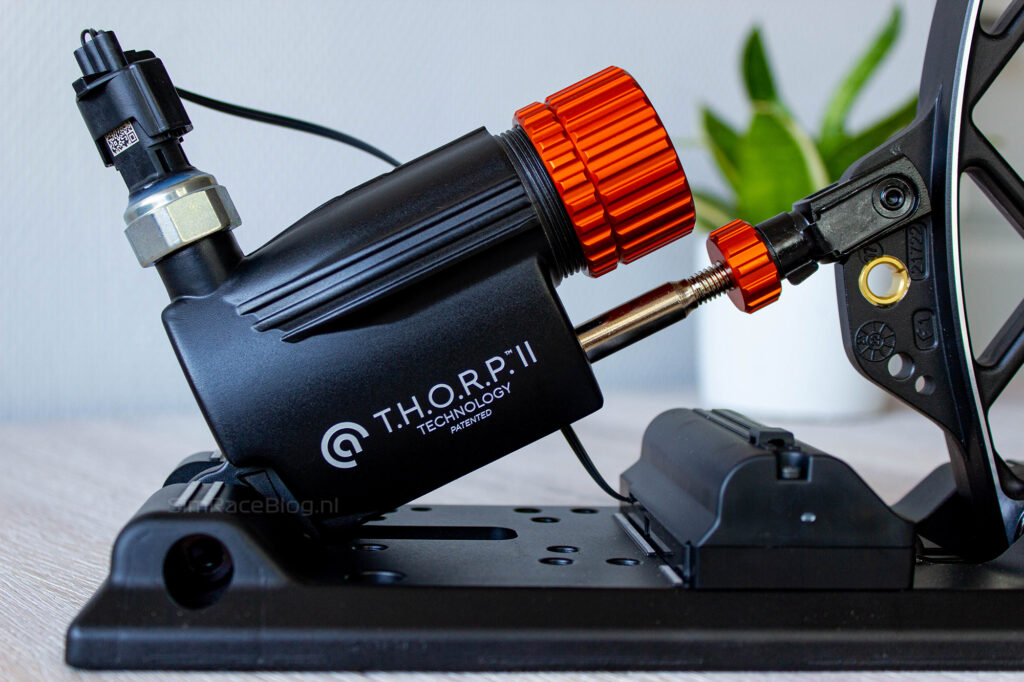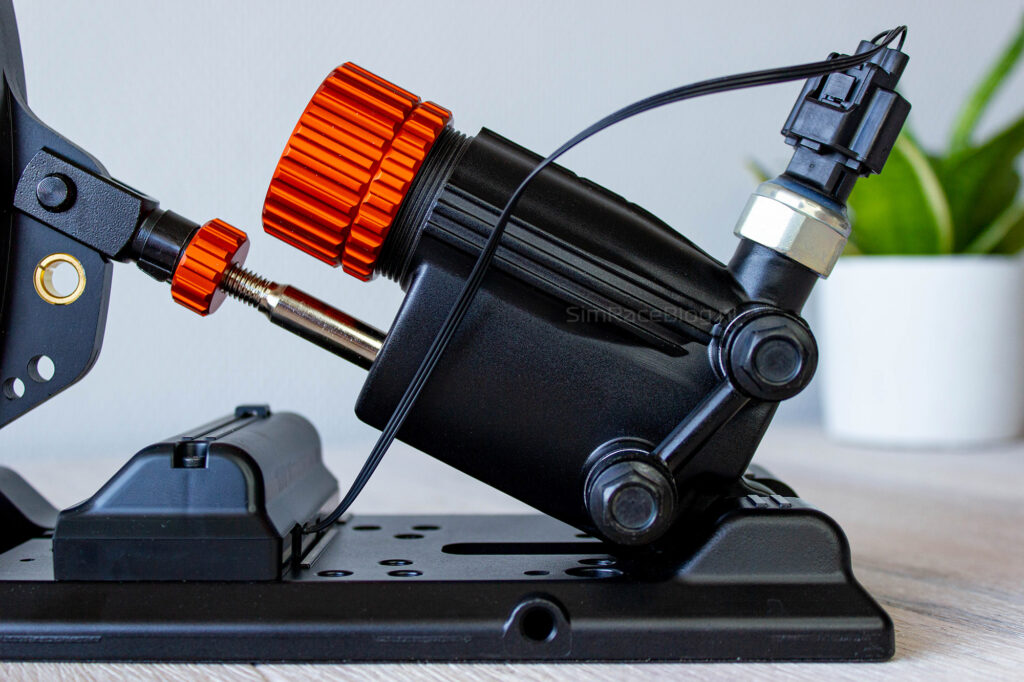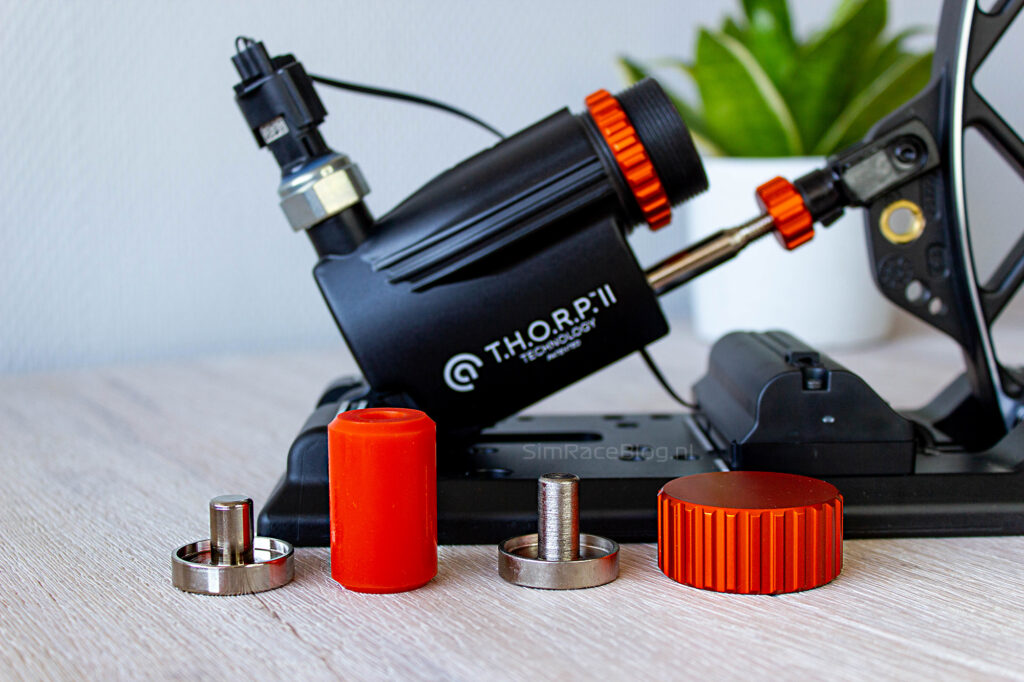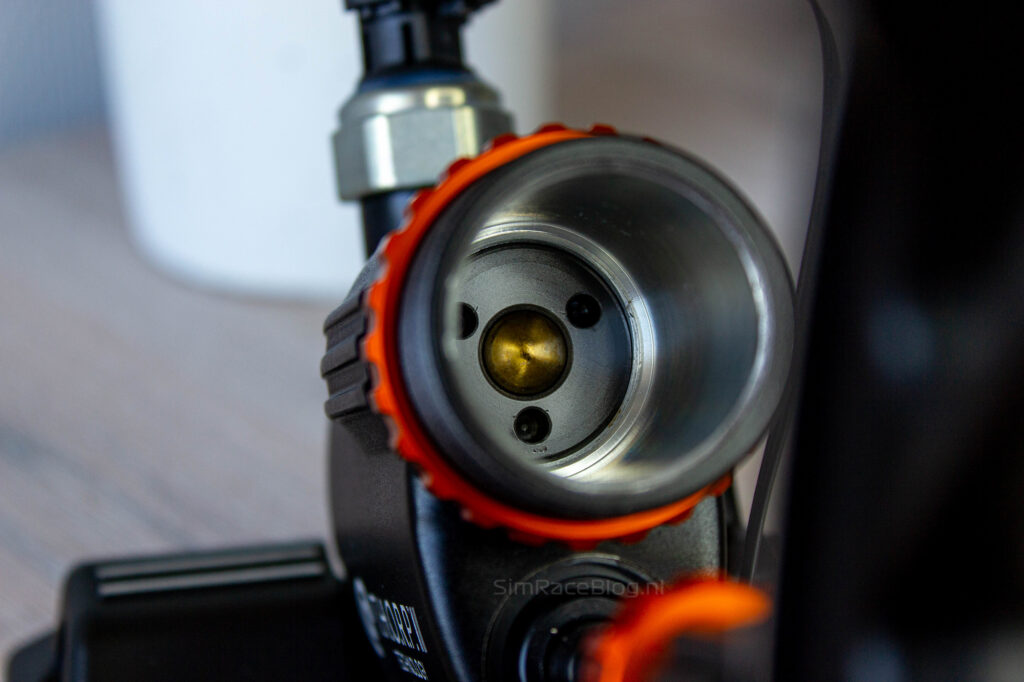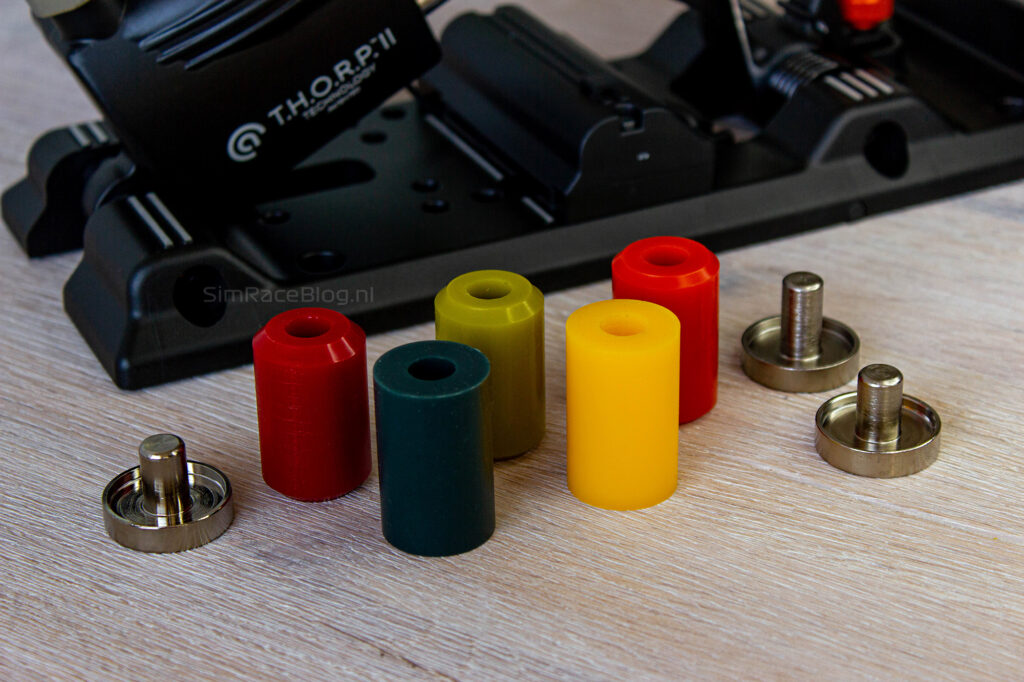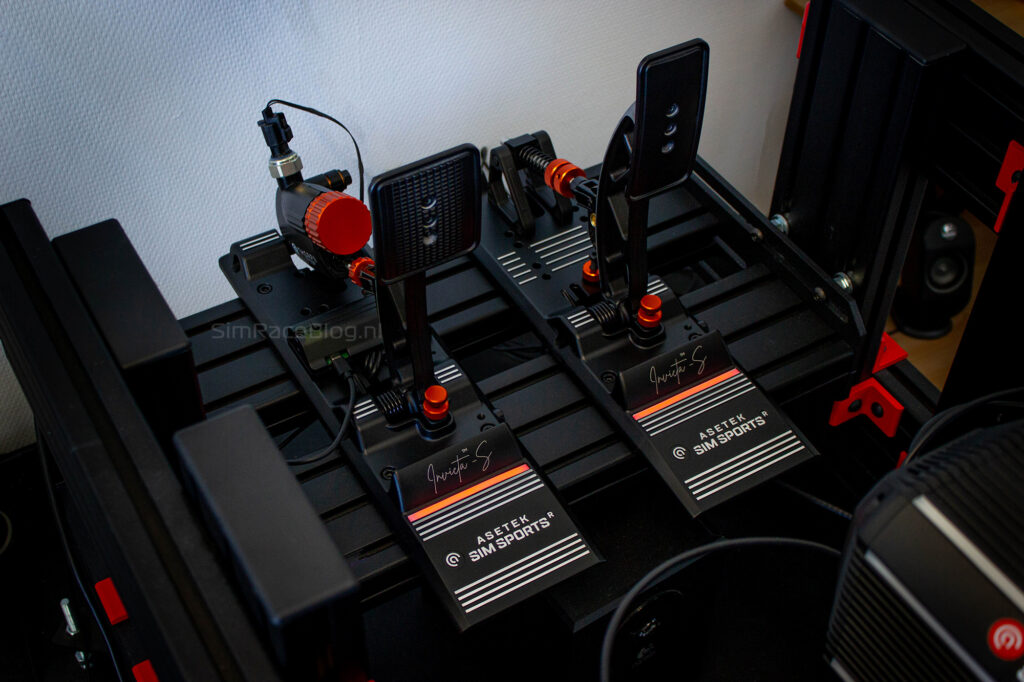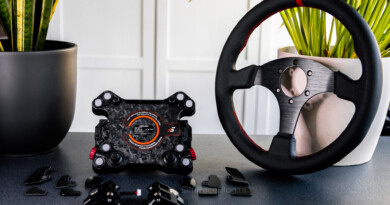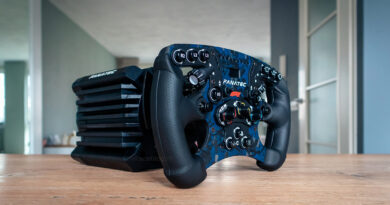Asetek SimSports Invicta S-Series with T.H.O.R.P. II
Asetek SimSports, better known simply as “Asetek,” is a giant in the world of sim racing. It’s a name that has become inseparable from the scene, thanks to its extensive range of hardware. Their lineup spans from the La Prima series for beginners to the Invicta series for the top tier of sim racing equipment. This is an impressive achievement, especially considering that Asetek only entered the market in 2021 with a single high-end pedal set: the Invicta pedals.
The Invicta pedal set stood out with its unique hybrid resistance system on the brake pedal, called T.H.O.R.P., which stands for “Twin Hydraulic Opposing Rapid Pistons.” This system combines an elastomer bushing with a hydraulic mechanism to deliver the Invicta pedal’s distinctive feel. Over the years, the Invicta pedals have undergone several updates based on user feedback, and now it’s time for the T.H.O.R.P. system to get an upgrade.
Since the Asetek Invicta pedals have had a permanent spot on one of our dedicated sim rigs for years, we were thrilled when Asetek offered us the chance to review the new T.H.O.R.P. II system. Of course, we accepted the offer with open arms.
To test the T.H.O.R.P. II system, Asetek sent us the latest version of the Invicta S-Series, where the T.H.O.R.P. II system comes pre-installed. At the time of writing, this pedal set is priced at €1,028.49 (including VAT, excluding shipping) in Asetek’s official webshop. If you prefer the standard Invicta pedal set, where both pedals are connected, that version is available for €967.99 (including VAT, excluding shipping).

Packaging & Contents
After a short journey from Denmark to the Netherlands, our package arrives at our doorstep within three business days via UPS. As we’ve come to expect from Asetek, the packaging is well put together—a sturdy brown product box wrapped in a sleek black sleeve. This sleeve features product photos of the Invicta S-Series, key product information, and, of course, Asetek branding.
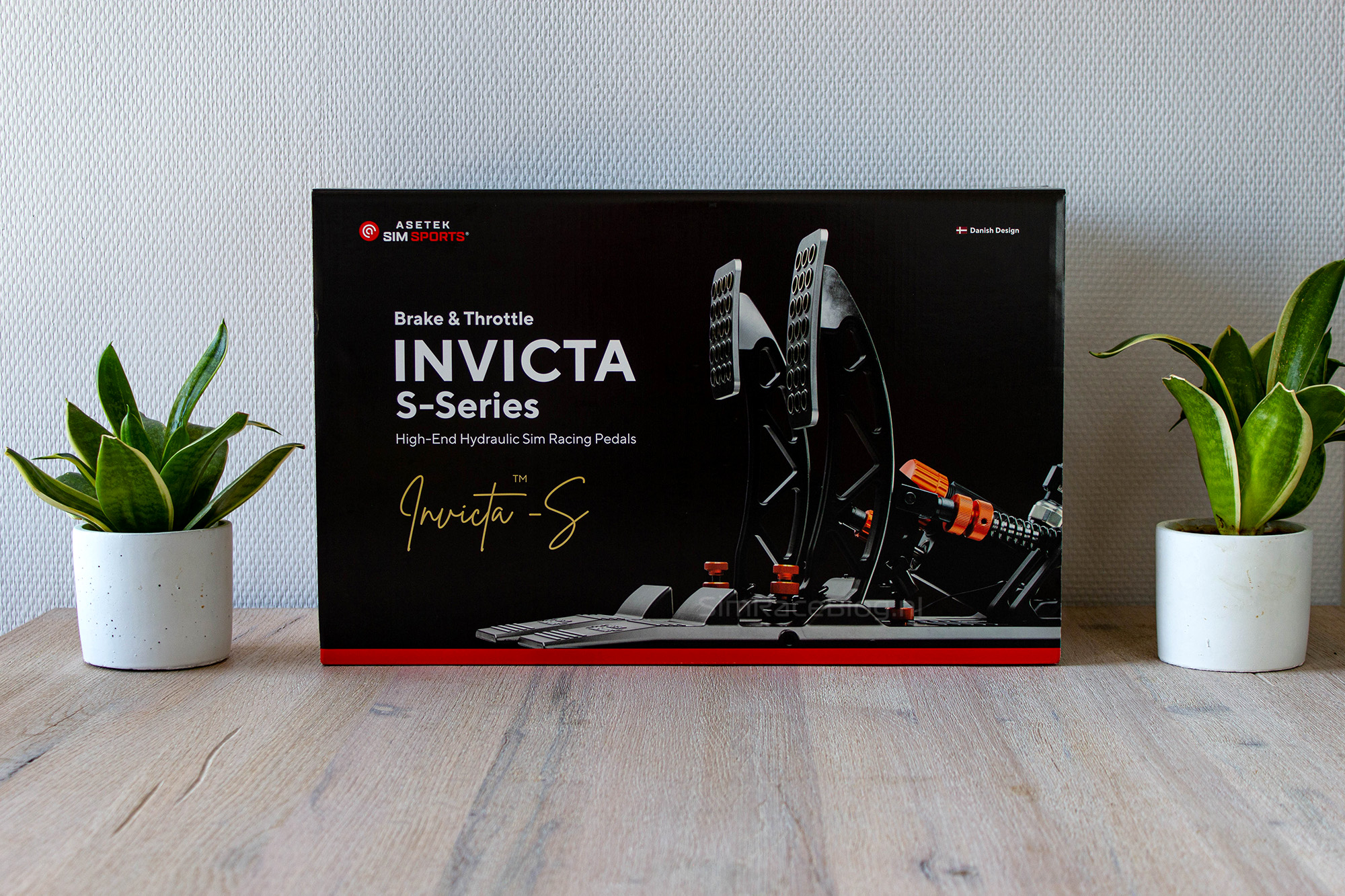
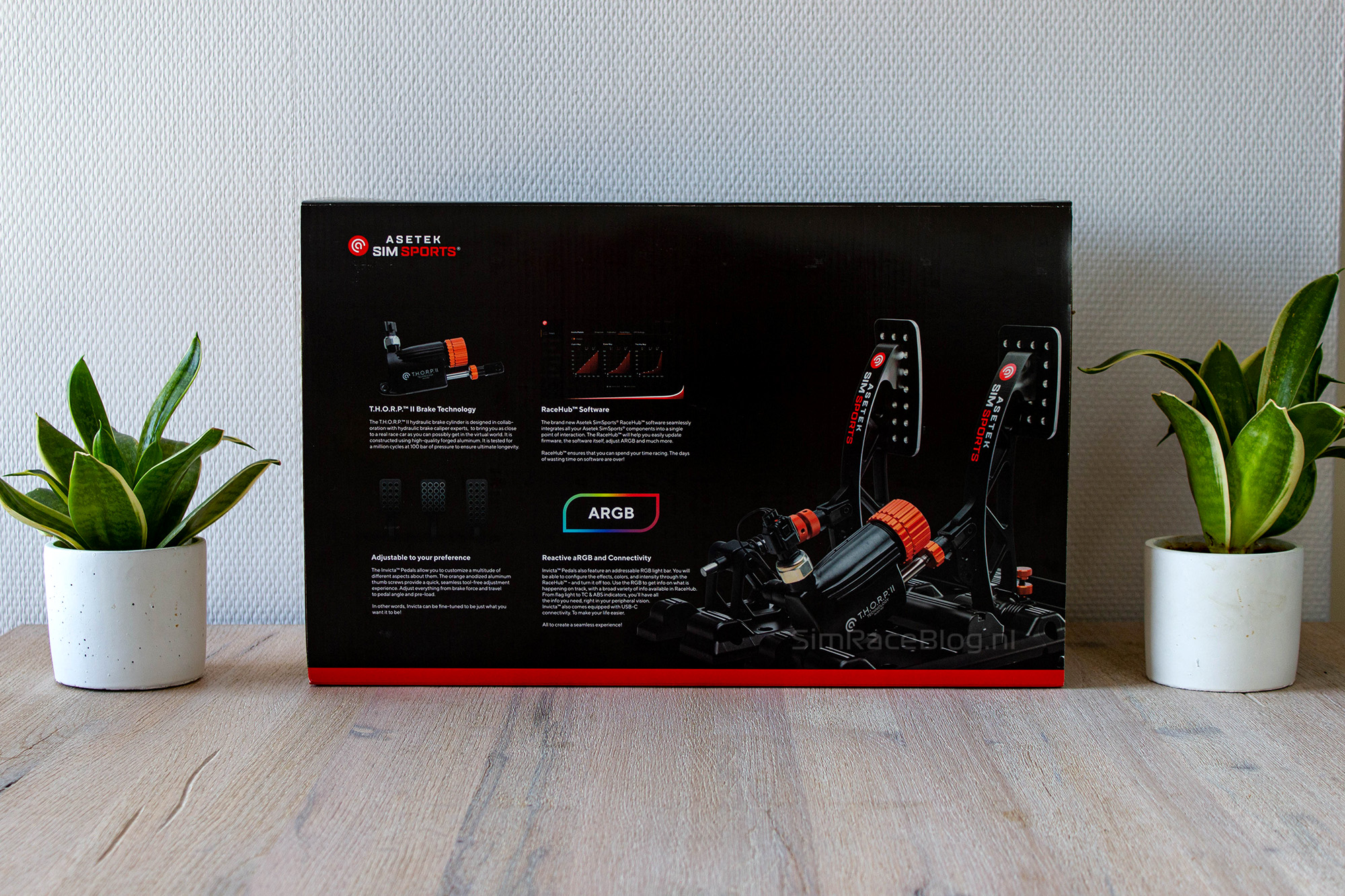
Inside the box, which is neatly organized in layers, we first find the standard paperwork. This includes a product warranty booklet, a small safety information booklet, a square card reminding us to download the RaceHub software, and another card with a QR code linking to the product manual. Additionally, there’s a small bag of performance grease and, of course, an A4-sized sticker sheet.
On the top layer, we also find a small square box packed with components. Inside, we discover various elastomers of different stiffness levels, an extended end cap (which we’ll discuss in the next section), the necessary mounting hardware, two Allen wrenches, signal cables for connecting the pedals, USB cables for PC connection, and finally, a spring for the throttle pedal. All in all, a box filled to the brim.
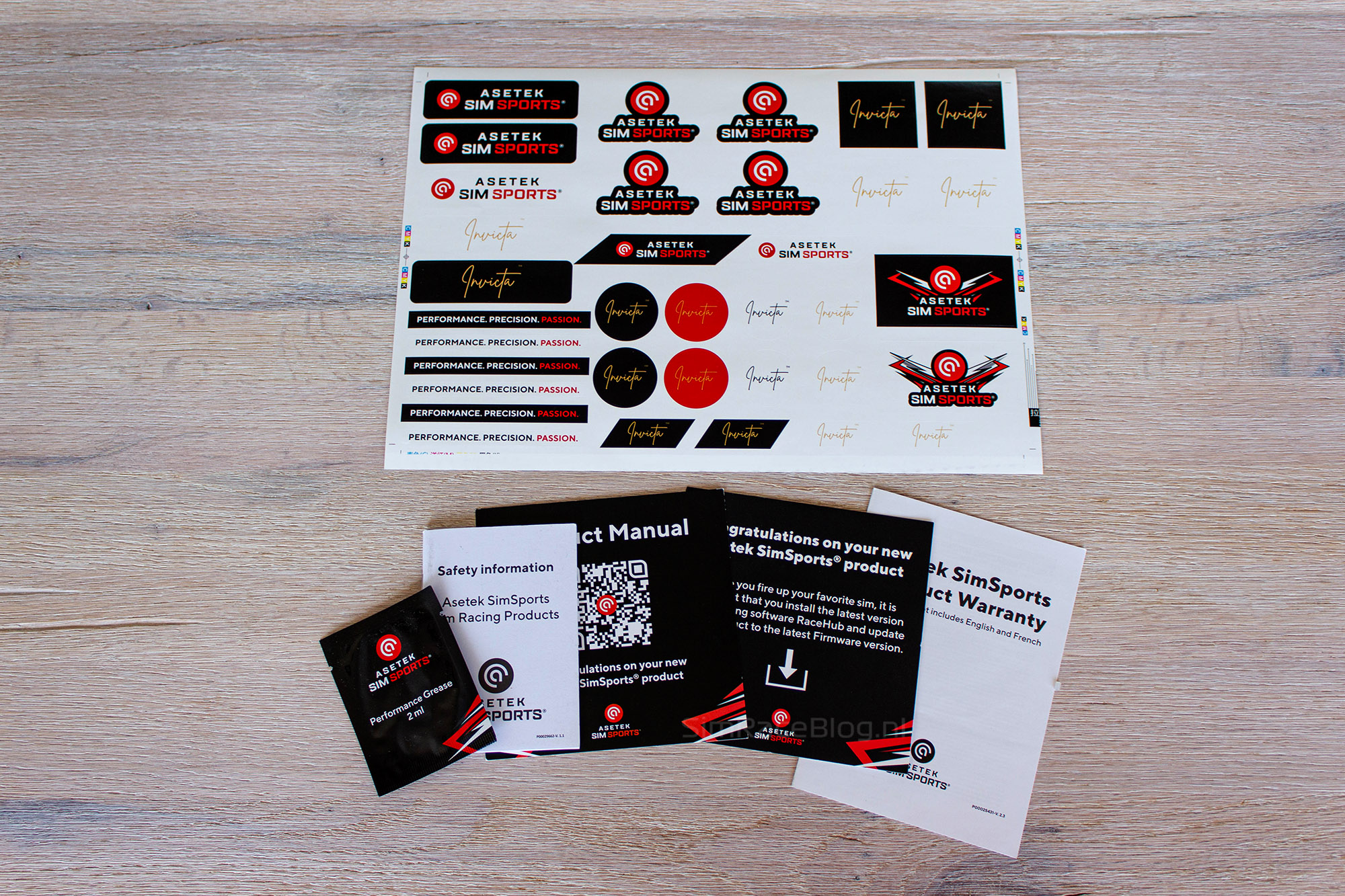
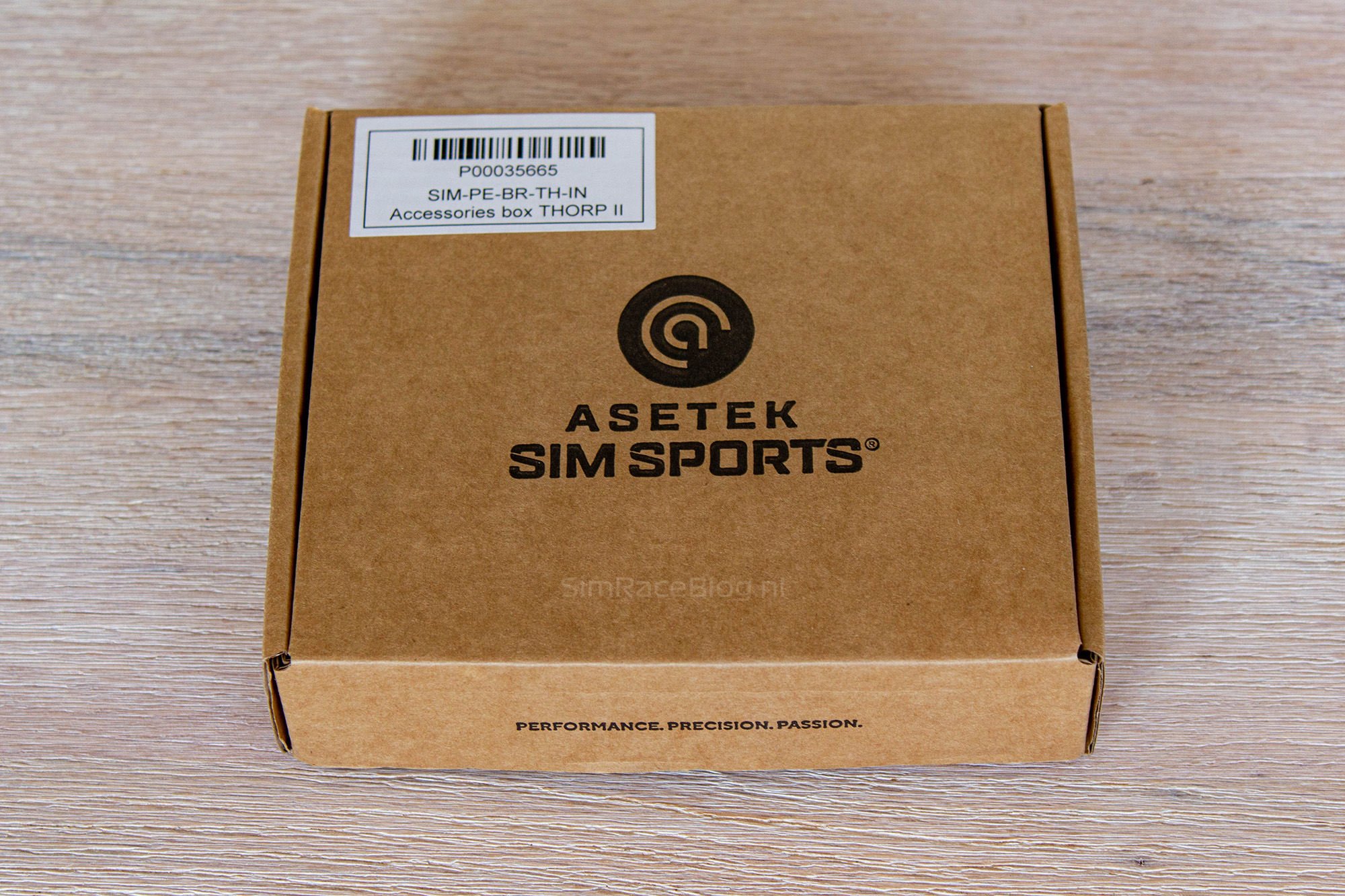
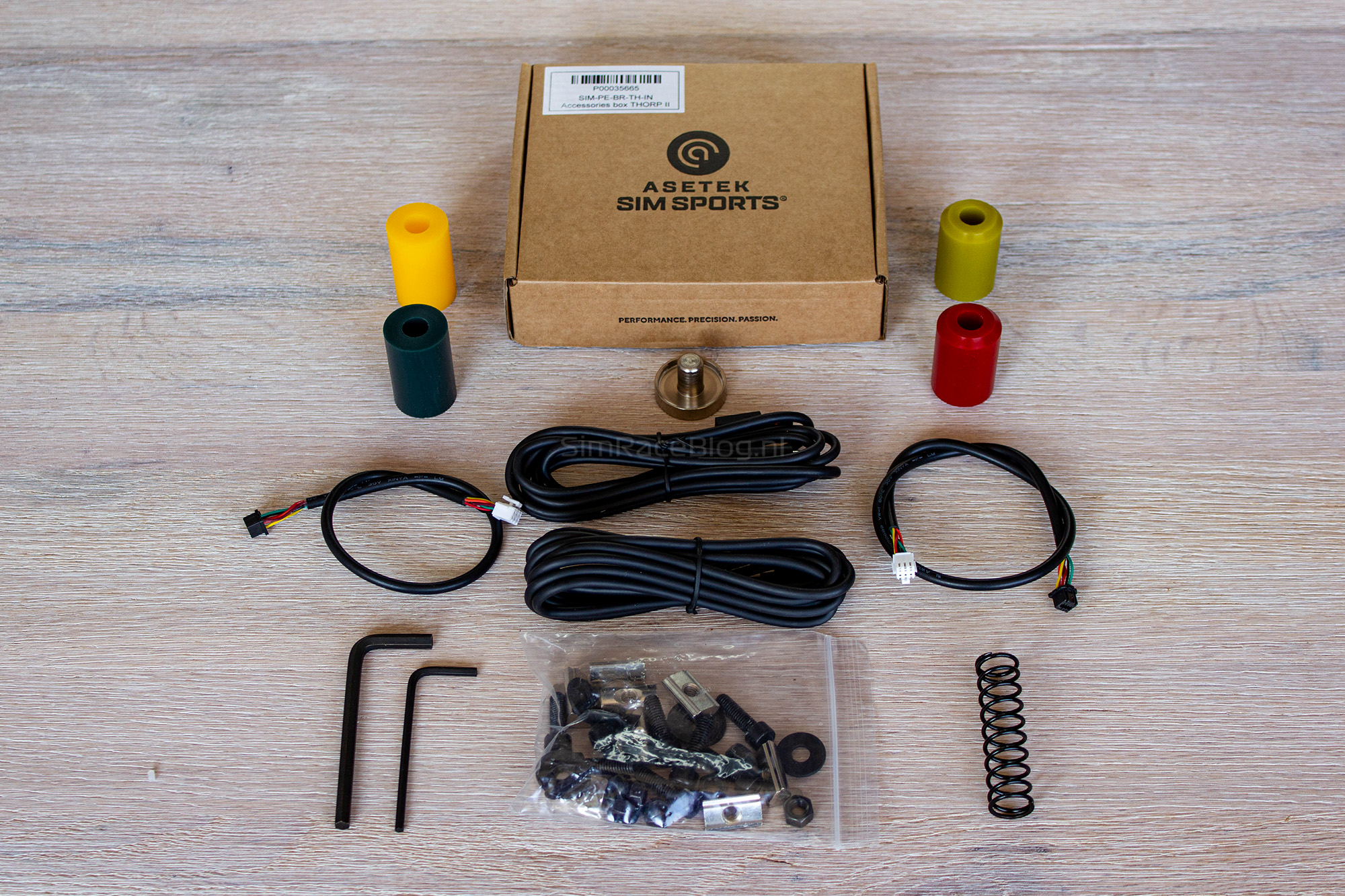
Moving to the bottom layer, we find the two pedals that make up this set. Since this is the S-Series, both the throttle and brake pedals are separate units.
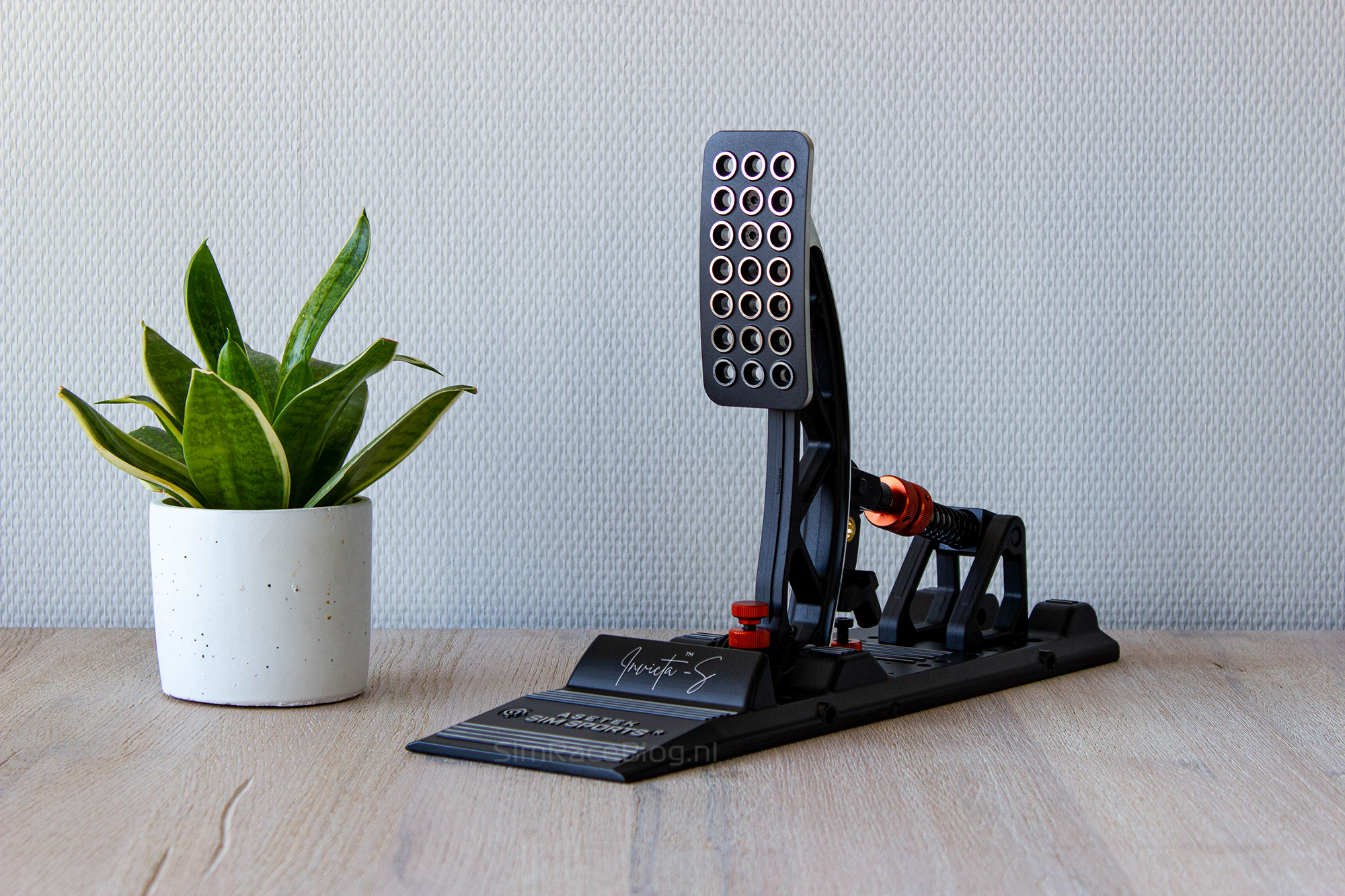
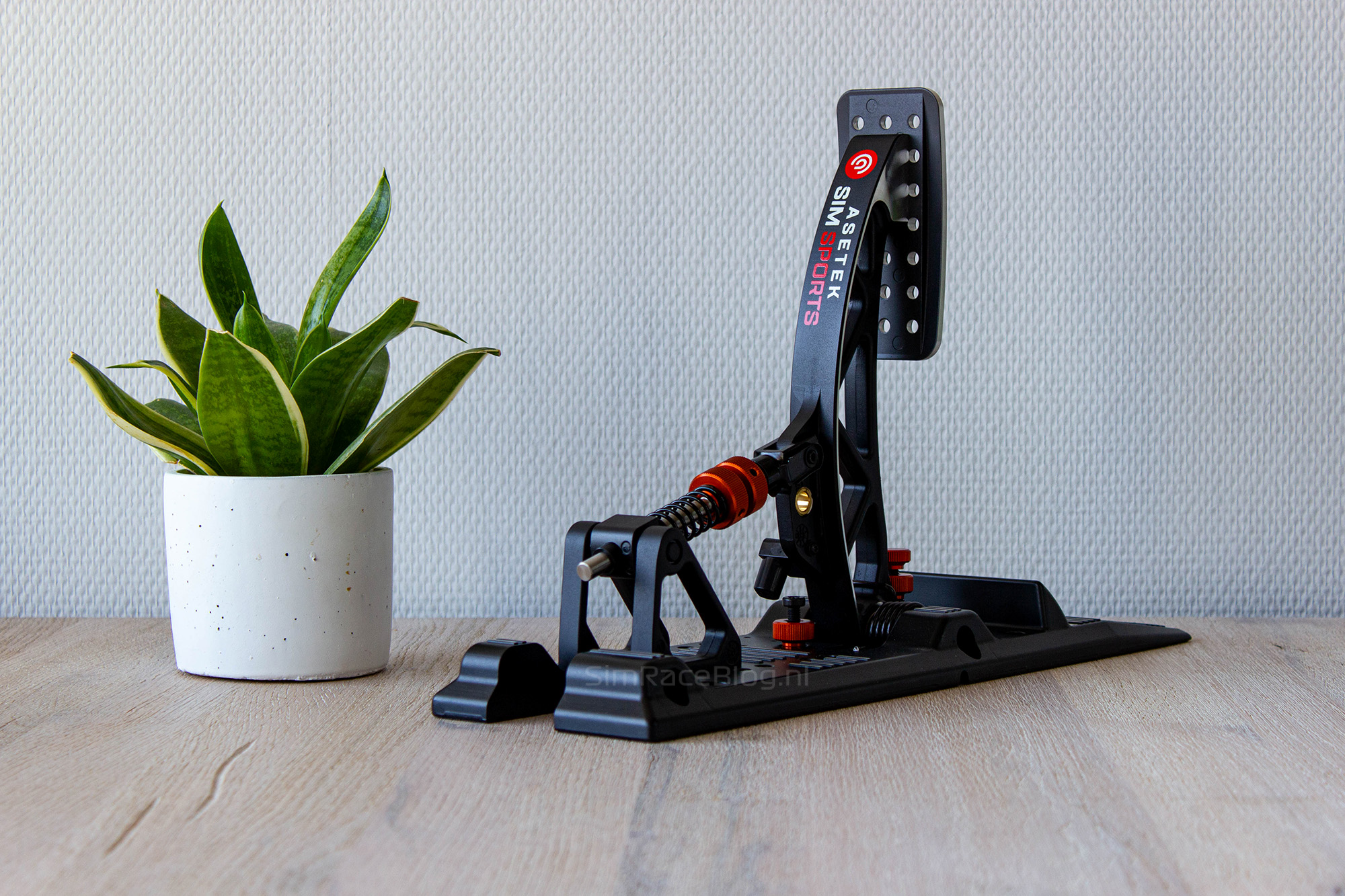
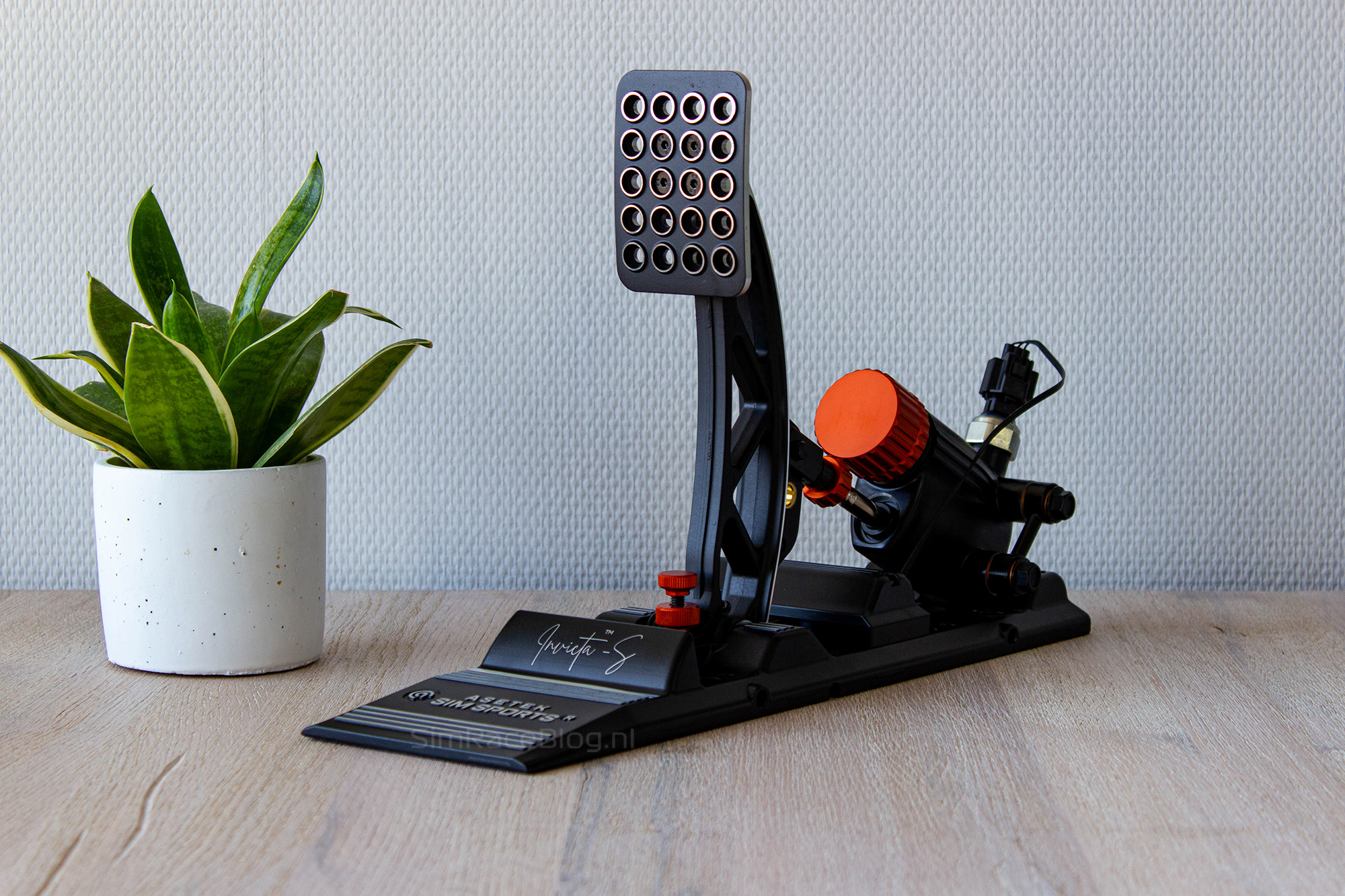
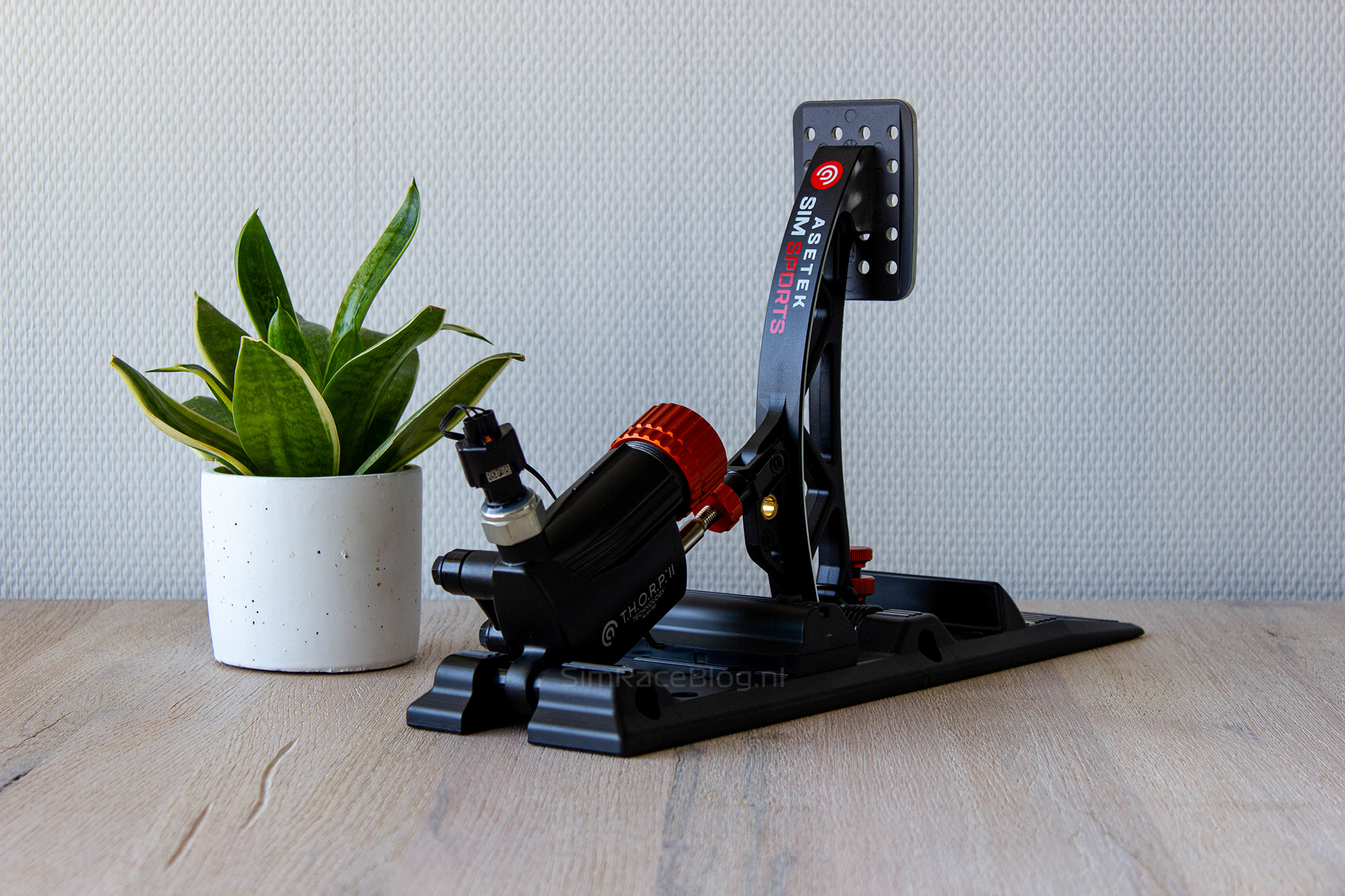
Engineering T.H.O.R.P. vs. T.H.O.R.P. II
The biggest change in the new generation of Invicta pedals compared to the older versions is the T.H.O.R.P. system. The old system has undergone a complete overhaul, both in appearance and internal mechanics. To map out the differences, we will compare the old and new systems.
The outside
Looking at the housing of both the old and new T.H.O.R.P. system, several differences immediately stand out. The new system is noticeably shorter than its predecessor, and the orange adjustment knob, which was previously located on the back, has been moved to the front.
In addition to being repositioned, the knob has also been redesigned. The old knob featured a threaded hole in the center, whereas the new one resembles a cap that screws over the housing. Because of this change, the locking knob that was once screwed on top of the main adjustment knob has been replaced by a locking ring that secures against the orange “cap” to hold it in place.
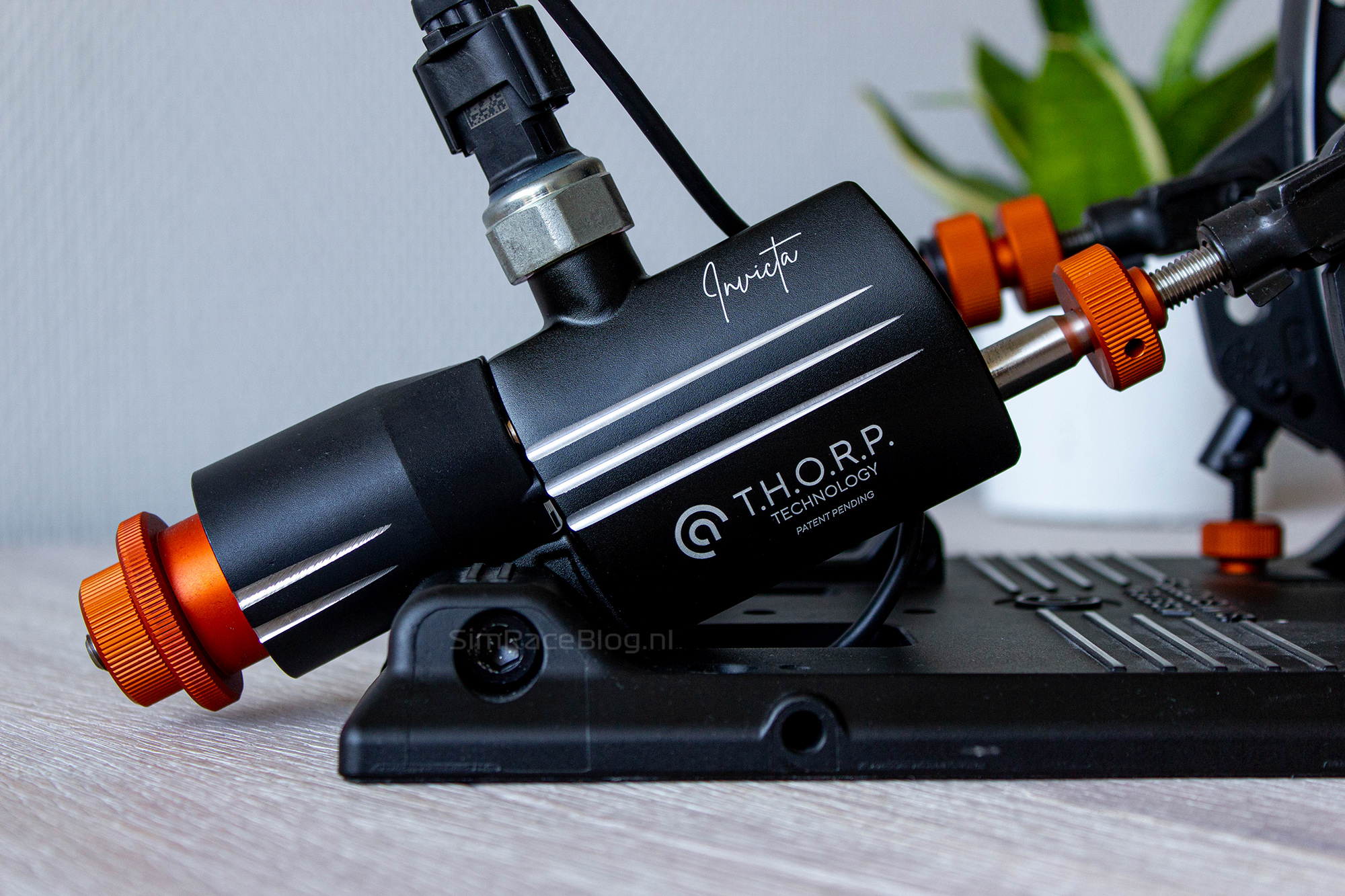
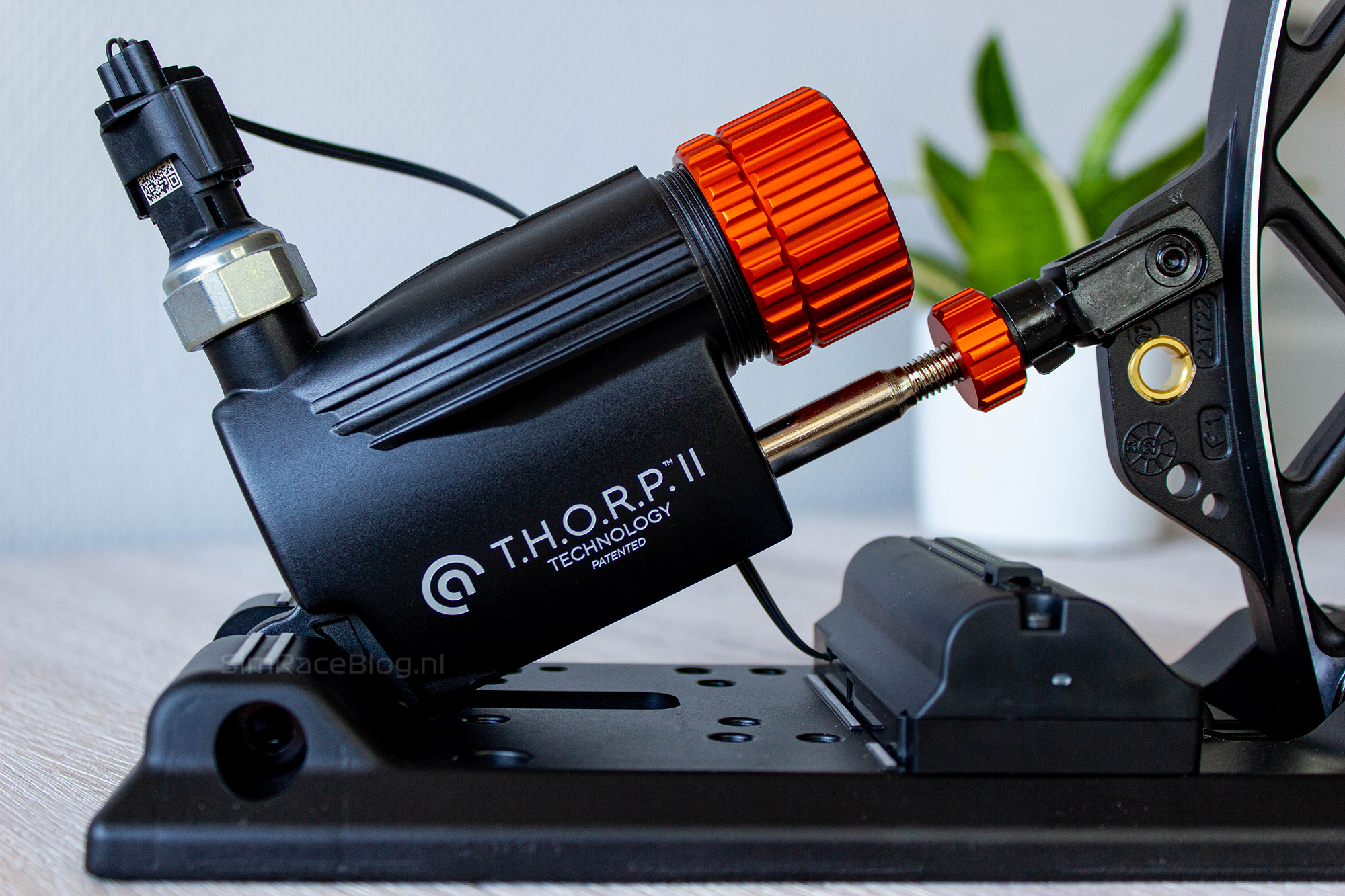
Another noticeable detail on the housing of the T.H.O.R.P. II system is on the side, where two bolts are screwed in. At the moment, these bolts don’t serve any function. However, Asetek has announced that they will be releasing a module that can simulate ABS feedback, which can be mounted onto the housing at the position of these two bolts. Unfortunately, Asetek has also stated that this will not be available as a standalone upgrade and will only be included as a factory-installed feature.
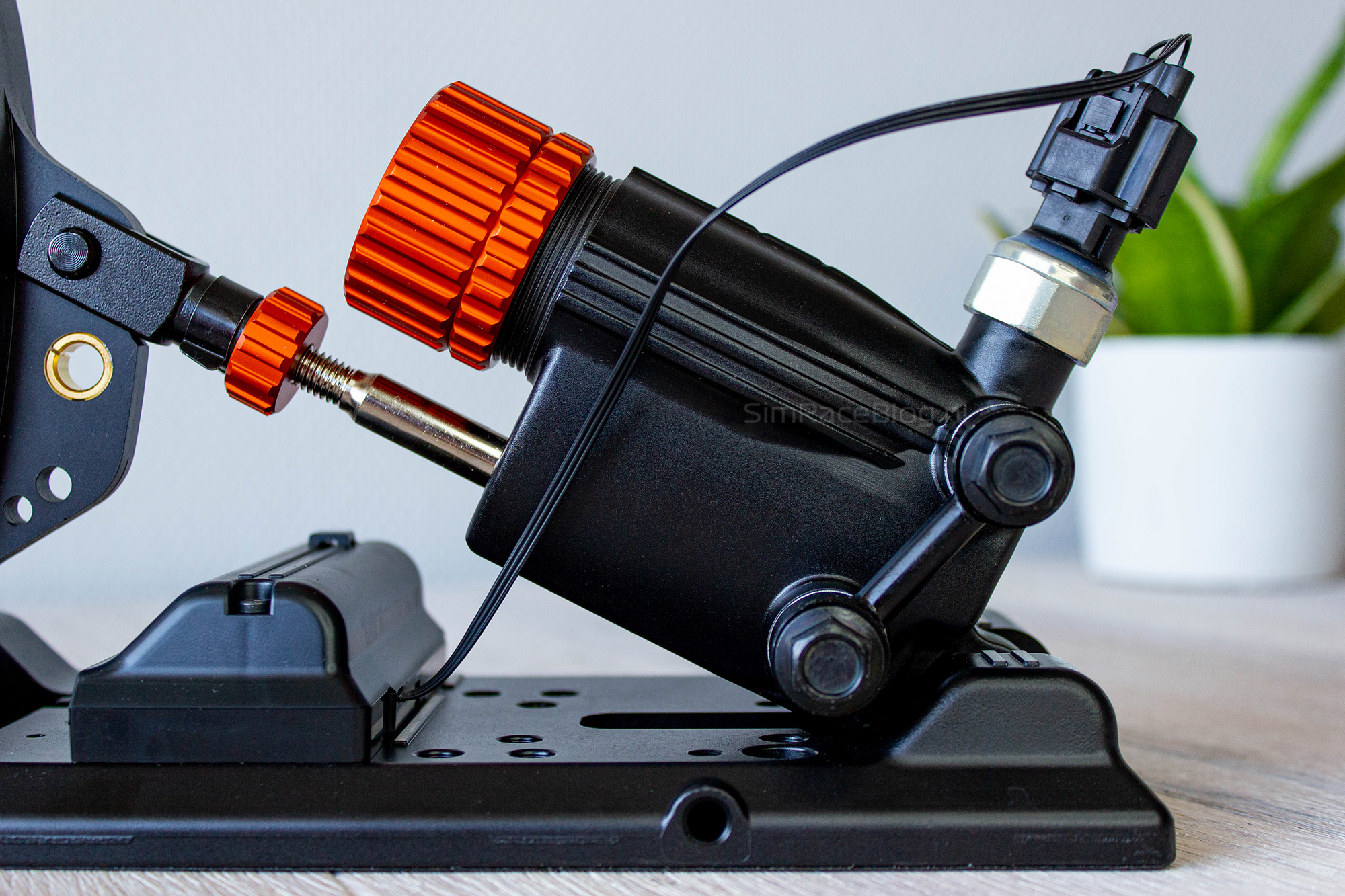
One change compared to the old system that we find a bit disappointing is the wiring of the pressure sensor. Our old Invicta pedal set has a relatively thick and sturdy-looking cable attached to the pressure sensor. In the new design, we see three somewhat fragile-looking wires running together toward the controller. While this won’t make a functional difference since these cables don’t experience any strain, it does appear more delicate compared to having them enclosed in a thicker protective sheath.
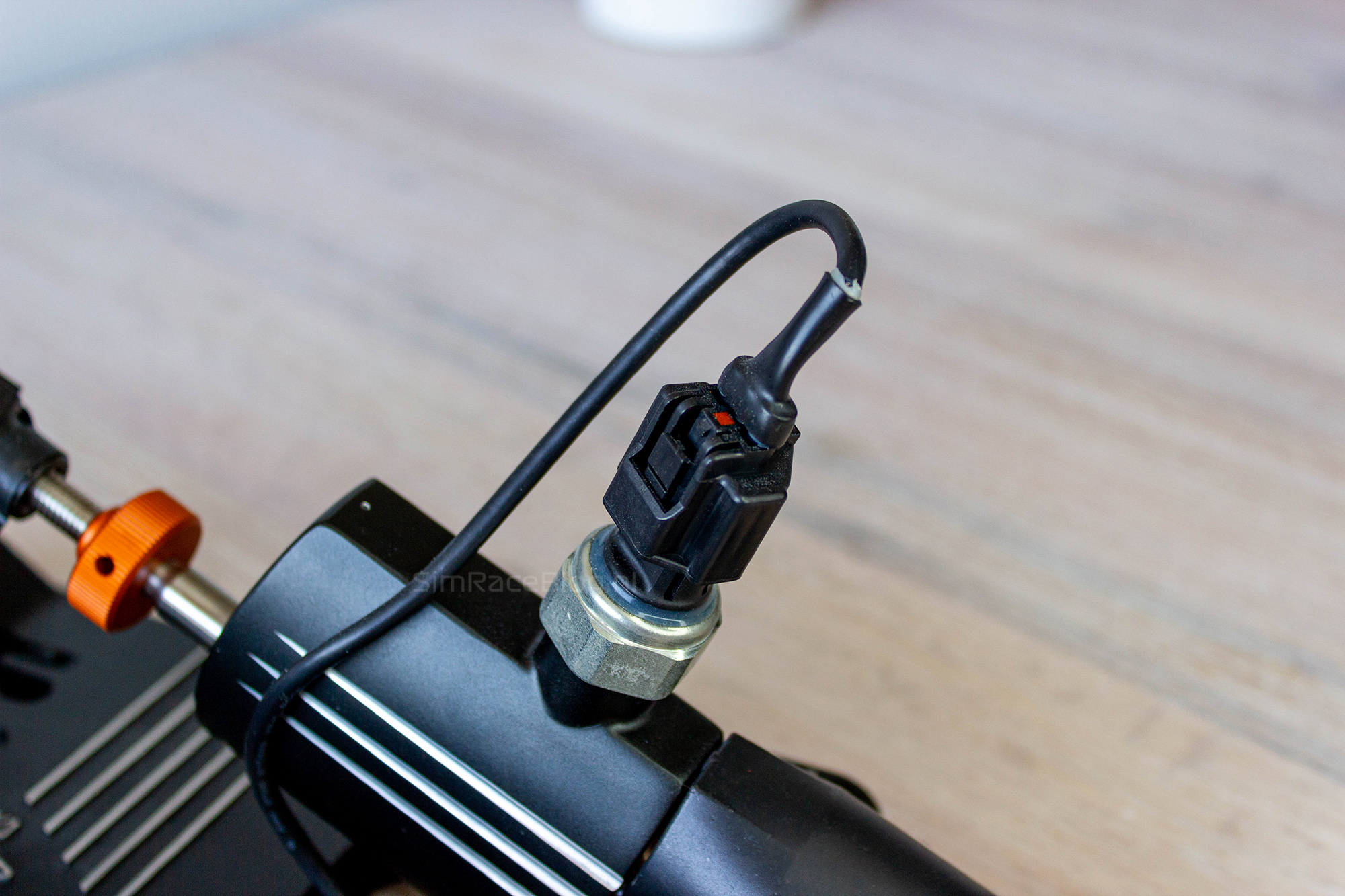
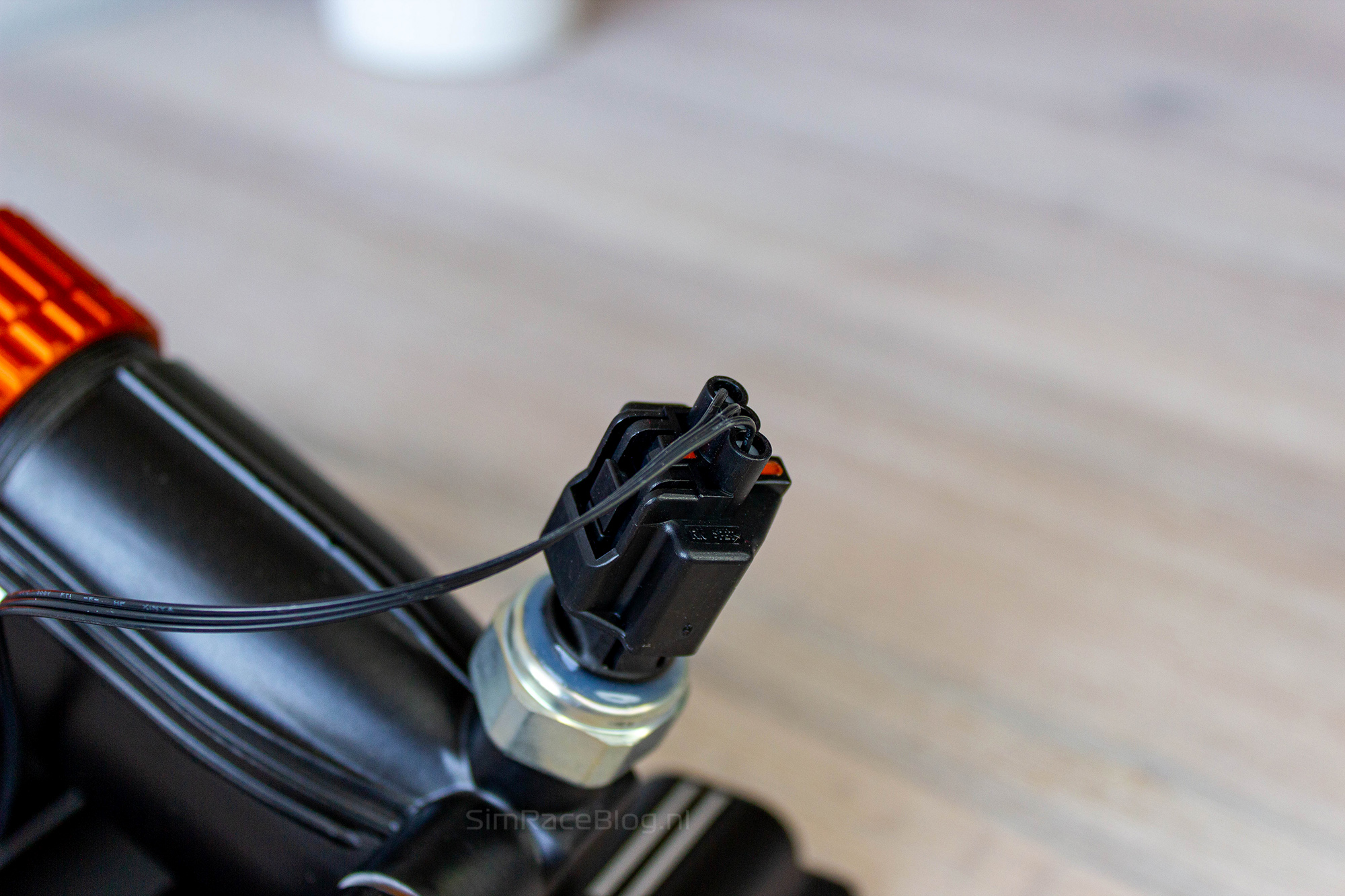
The inside
The most important changes in the new T.H.O.R.P. II system are on the inside. While we personally appreciated the stiffness and short travel of the old Invicta pedal, the sim racing community provided a lot of feedback that Asetek’s brake pedal was too stiff and lacked movement. Taking this feedback into account, Asetek set out to redesign the system.
The internal changes make it clear that the old system has undergone a major overhaul. In the original T.H.O.R.P. system, there was a long threaded rod where a single elastomer was slid over. The T.H.O.R.P. II system features a more complex design with additional components. Inside the housing, there is a hollow chamber containing one elastomer, secured by metal end caps on both sides. Each of these end caps has a central metal pin that fits into the elastomer. When the brake pedal is pressed, the two end caps are pushed toward each other, and the distance between the pins should correspond to the pedal’s travel.
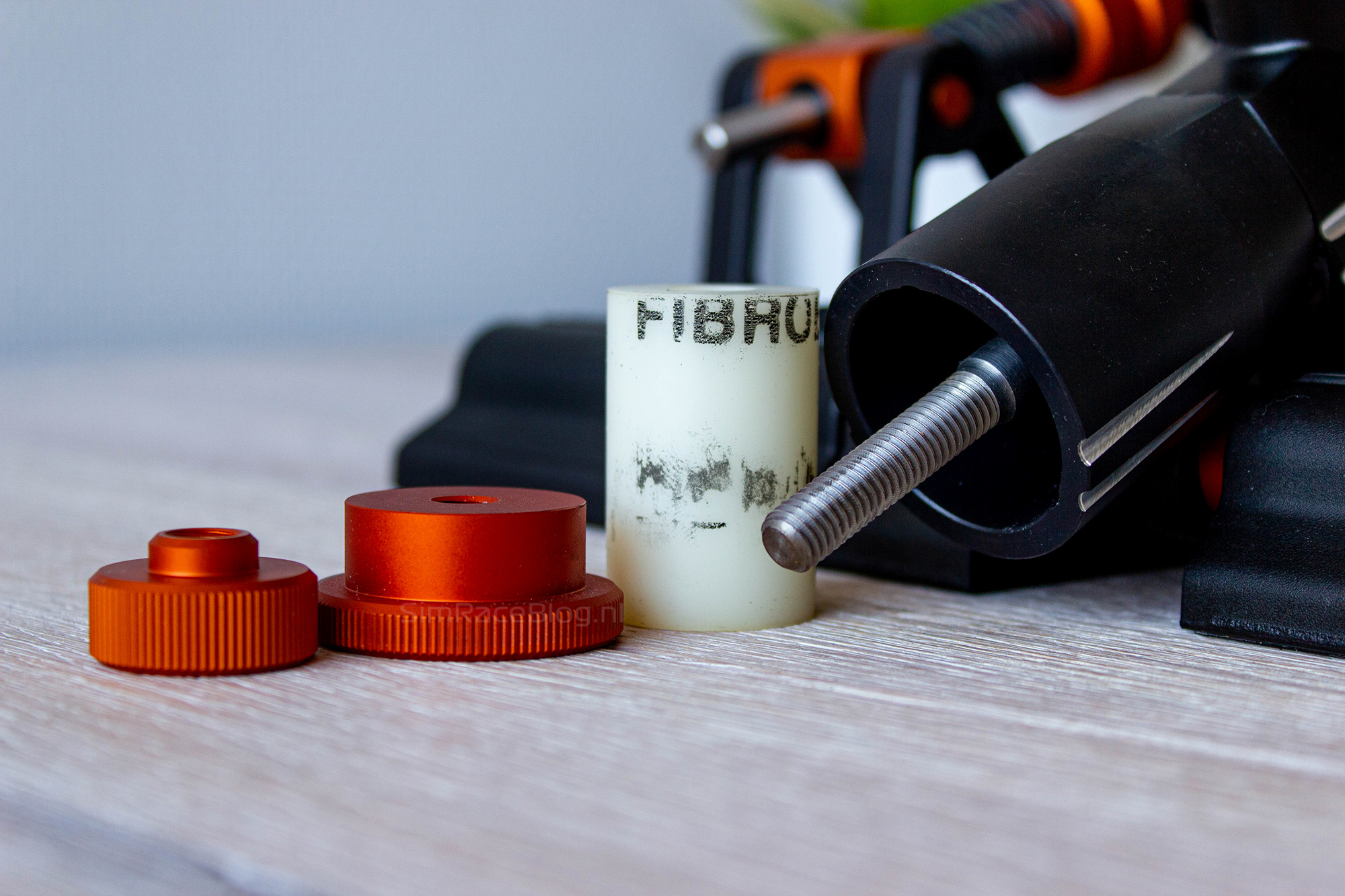
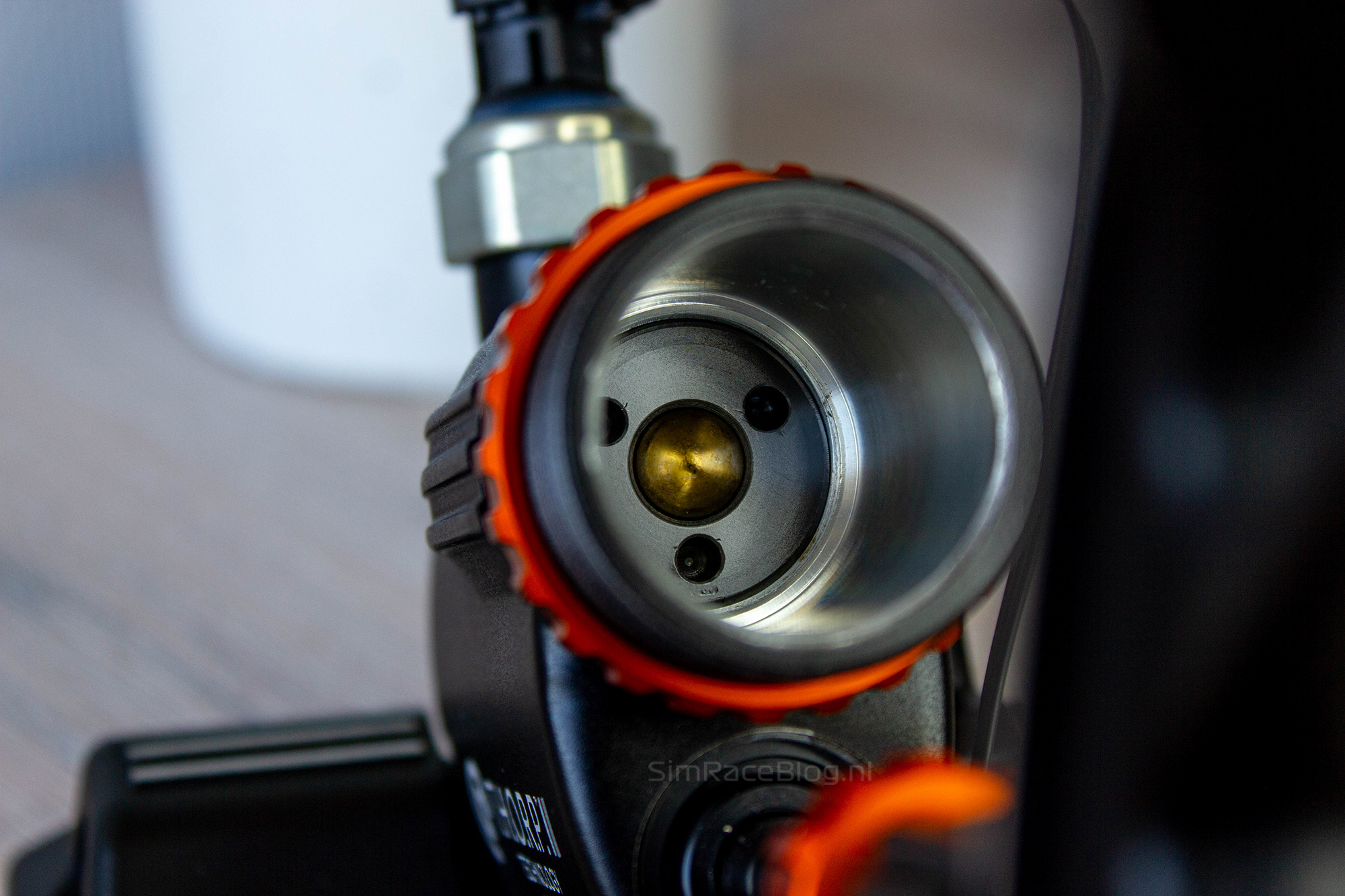
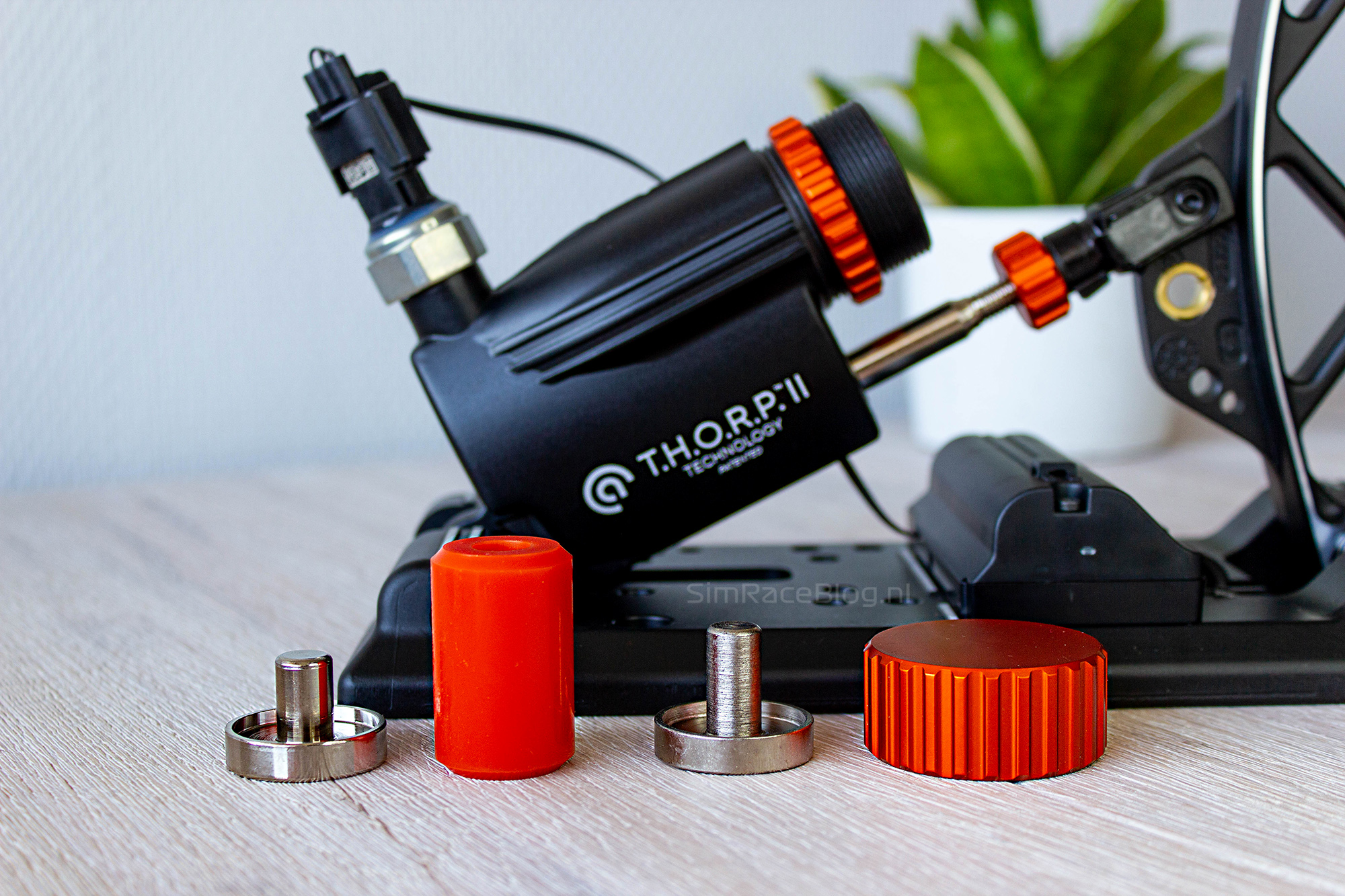
Preparing the set for use
Since the Asetek Invicta pedals with the T.H.O.R.P. II system mainly received an update to the braking system, we won’t go too in-depth on the software and mounting process. For that, we refer to our original review of the Asetek Invicta pedal set. However, we will briefly go through the steps we take before using our pedals.
Because this Invicta pedal set also features the rather sharp footplates on the pedals—and since we mostly race in socks—we swap these footplates for the Forte Pedal Face Plates before mounting the set on our rig. To make things easier, we also use the included grease to lubricate the inside of the T.H.O.R.P. II system beforehand. This helps prevent unwanted resistance, unnecessary wear, and unwanted noises during use.
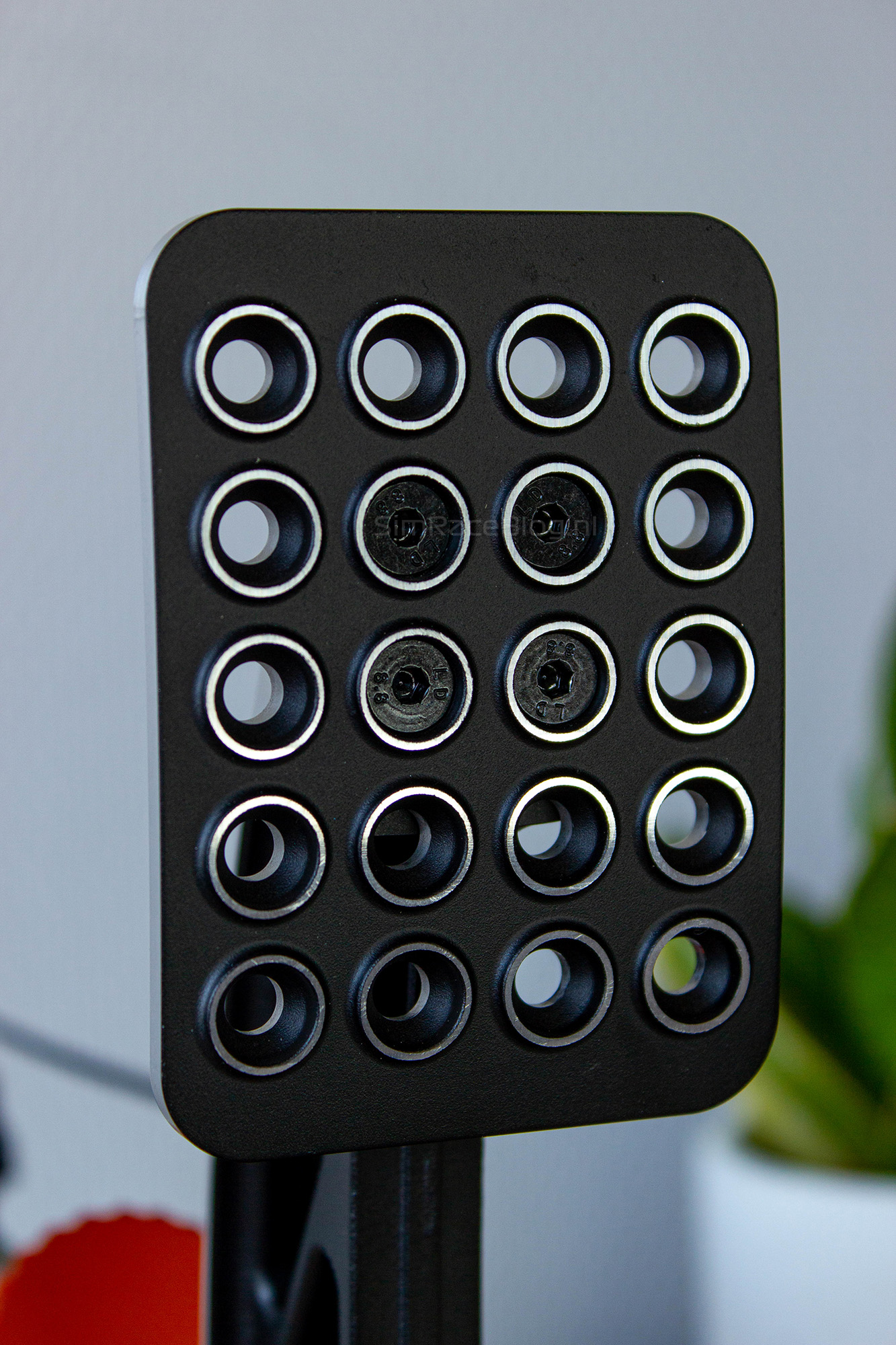
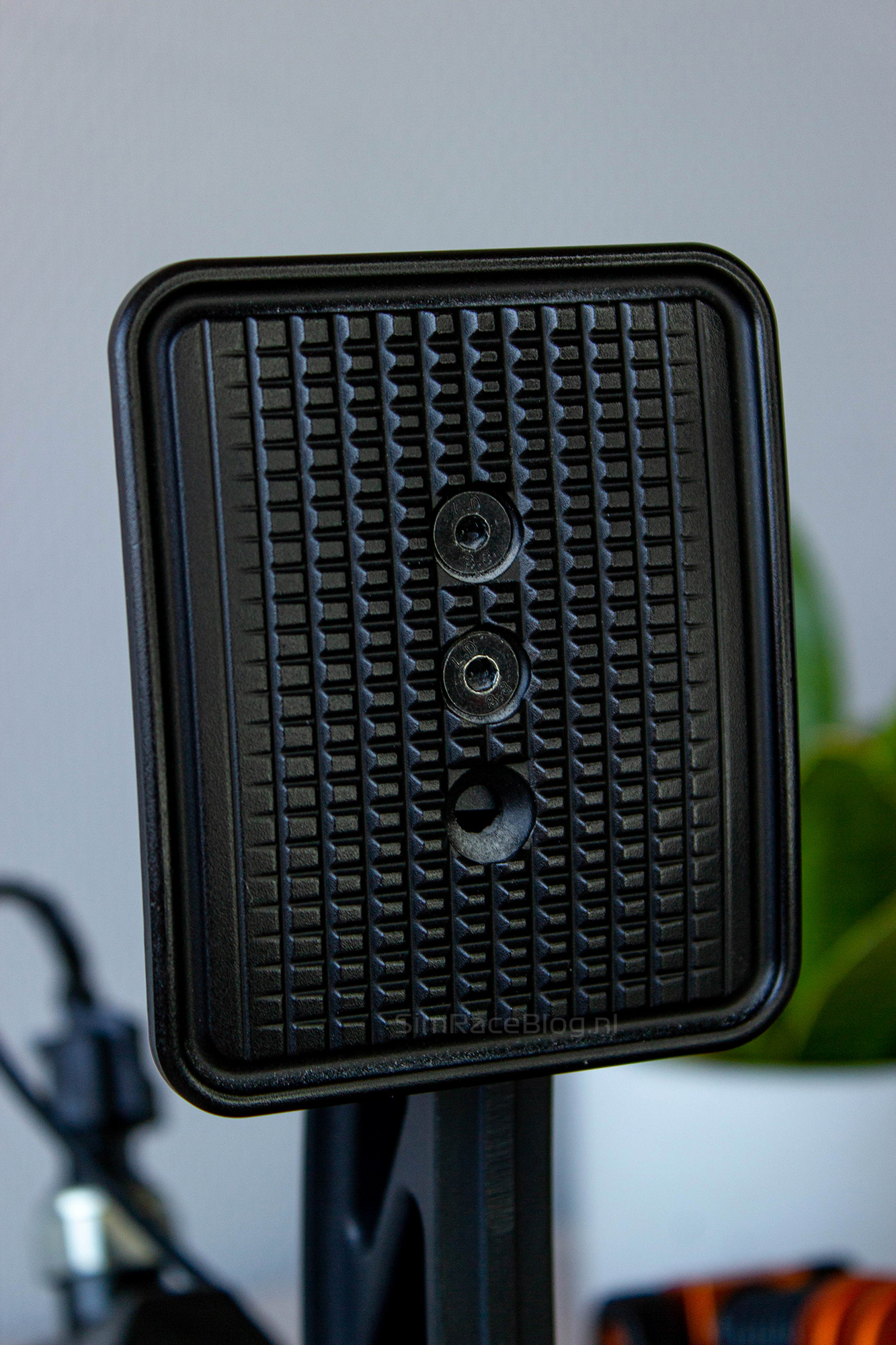
Mounting the pedals to our rig is very straightforward with the included materials, allowing us to secure the pedal set within minutes. However, the new T.H.O.R.P. II system does prevent us from using one of the screw holes for the brake pedal. The connection point for the future ABS module is positioned above the mounting hole, meaning we can only use three out of the four mounting points.
An important step when installing the S-Series pedals is to connect them to each other using the included cables before securing them to the rig. Otherwise, accessing the connector ports becomes impossible.
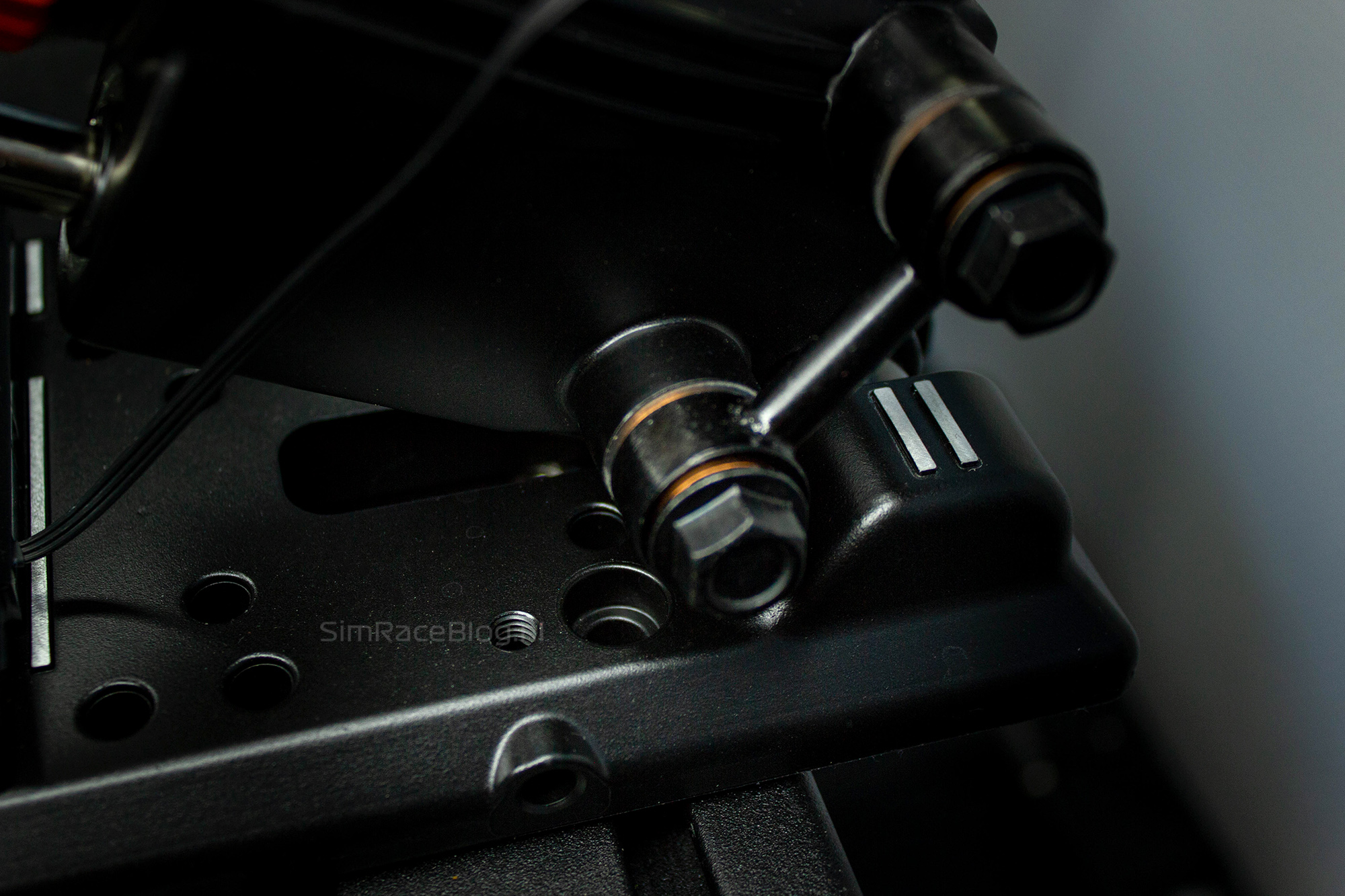
The final step is connecting the pedals to our PC, and then they’re ready for setup. Since we already have Asetek’s RaceHub software installed on our computer, the newly connected pedals are immediately recognized. We check if the pedals have the latest firmware and then perform the pedal calibration. After that, we’re all set to take them for the first test runs.
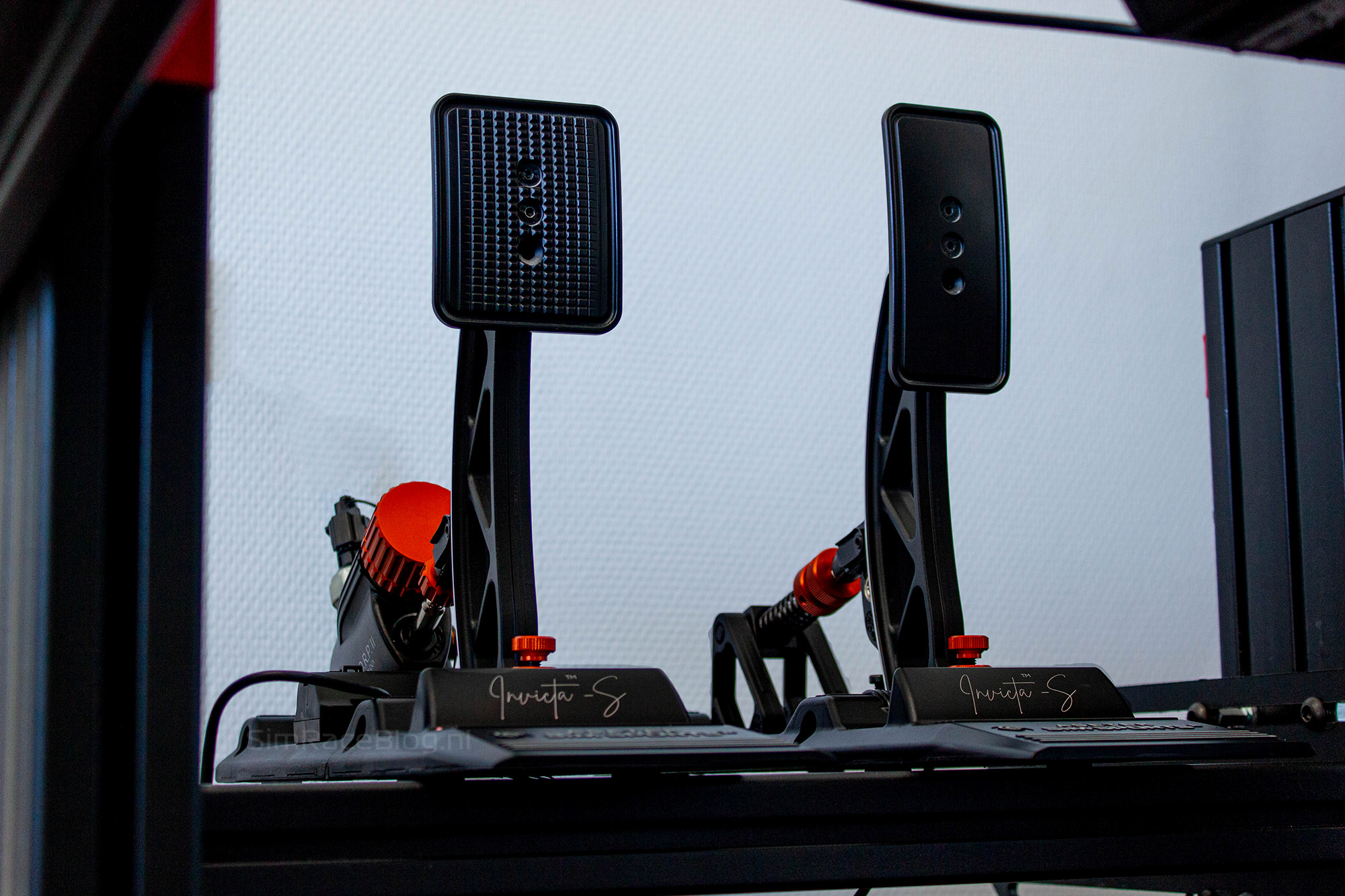
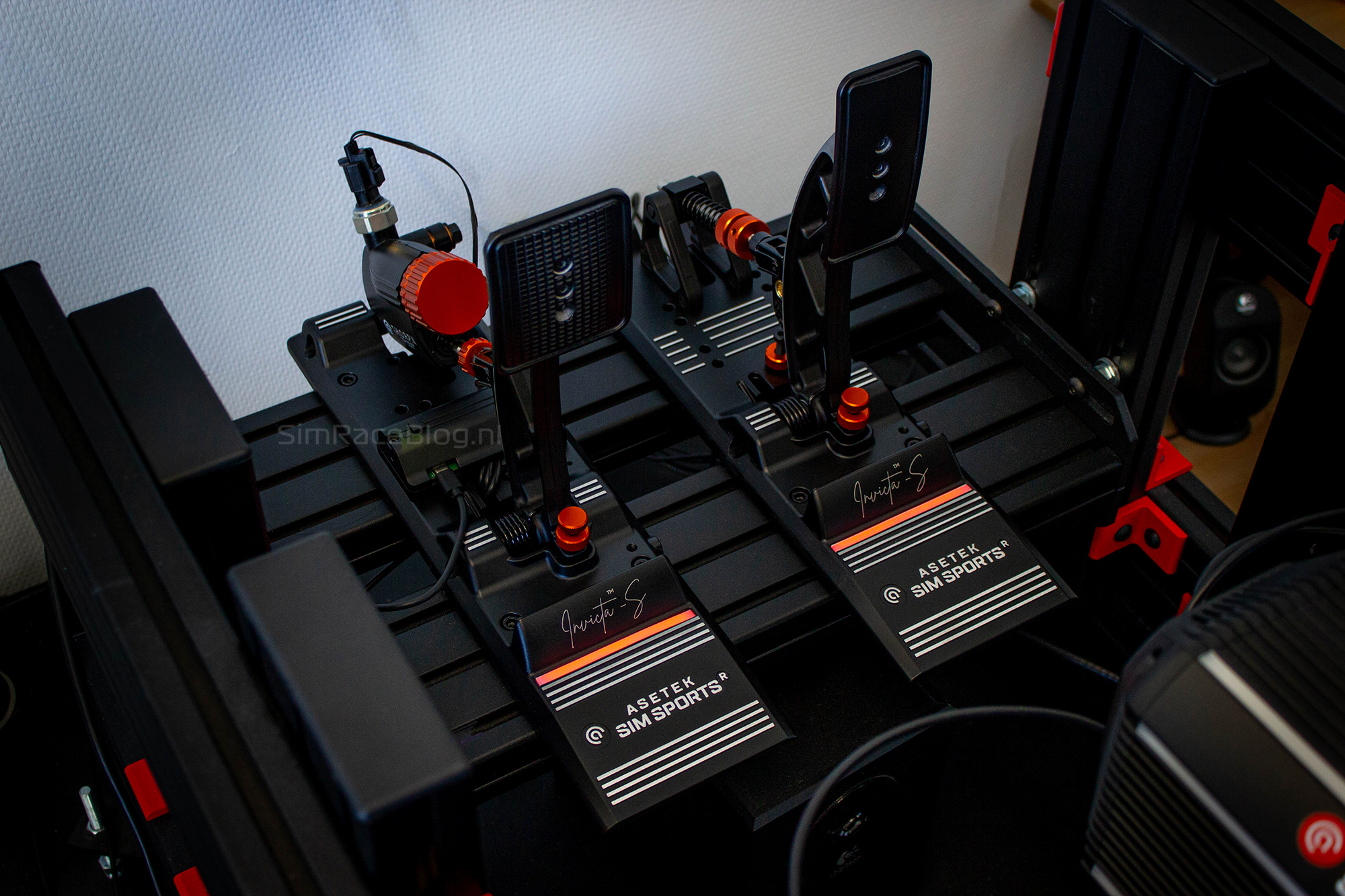
Using the Invicta S-Series with the T.H.O.R.P. II
With everything set up, we jump into our rig and start testing the new Invicta pedals by hitting the braking zones on the digital racetrack. We choose the F3 car in iRacing since we’ve been racing with our old set a lot in this car lately.
There’s not much to say about the throttle pedal—it feels just as good as before. It remains a well-balanced pedal with smooth resistance and a firm end stop.
But what we’re really curious about is the Invicta’s brake pedal. At first, it takes some getting used to. The pedal now has a two-stage structure with a noticeable transition between them. In the initial phase of braking, the T.H.O.R.P. II system uses the elastomer to build up pressure. Then, the second phase kicks in when the metal end caps make contact.
Compared to the previous version, the brake pedal now has a lot more travel in the first phase. It’s not excessive, but just enough to take the pedal to a new level without making it feel too soft or losing its original characteristics. This first phase feels very natural and makes it much easier to modulate braking, especially when trail braking—something that was much trickier with the previous T.H.O.R.P. system.
Once we push past the first phase, the metal end caps make contact, creating an immediate hard stop in pedal movement. However, this doesn’t mean the braking force stops increasing. If we keep applying pressure, the hydraulic system continues to build up brake force, allowing us to reach peak braking pressure quickly, just like with the original T.H.O.R.P. system.
One minor downside of this transition to the second phase is the sound it produces. When the metal end caps make contact, there’s a noticeable “click.” At first, we thought something might be wrong with our pedals, but after understanding the system, it made sense. It’s not an annoying noise, but it is another hardware sound you’ll hear while racing.
Adjusting the T.H.O.R.P. II
Since the T.H.O.R.P. II system uses an elastomer, we can adjust the resistance in the first braking phase by swapping it out for one with different properties. There are five different elastomer hardness levels to choose from, allowing us to fine-tune the brake pressure to our liking. While we’re already happy with the default red-orange elastomer, we wanted to test a few different options for this review.
The first thing we notice when swapping elastomers is how easy it is. Once we have the new elastomer in hand, the entire process takes less than 30 seconds before we’re back in our rig. It’s as simple as unscrewing the lid, removing the old elastomer, inserting the new one, swapping over the end cap, and screwing the lid back on. This makes it super convenient to experiment and find the perfect elastomer for our preference.
The selection of elastomers is decent, but the feel isn’t always ideal. The softest one we try is the olive green variant, but it’s so soft that it barely provides any real resistance in the initial braking phase. This makes the transition to the second phase feel unnatural, and the metal-on-metal “click” becomes even more pronounced. It only takes one lap before we swap it out for the next step up, the dark green elastomer, which unfortunately doesn’t feel much better. While it offers slightly more resistance, it’s still too soft for a comfortable and controlled braking experience.
Next, we test the firmest option, the dark red elastomer, which sits at the opposite end of the spectrum. This one feels rock solid—so much so that it actually makes the brake pedal feel even stiffer than the previous Invicta pedal. This reinforces our belief that Asetek made the right choice in using the red-orange elastomer as the default, as it provides the best balance between resistance and travel.
In addition to adjusting resistance, we can also shorten the pedal’s travel. The set includes an alternative metal end cap with a longer pin. Swapping to this variant reduces the distance between the two end caps, making the hard stop engage sooner. However, we find that having a bit more travel feels more natural, so we quickly switch back to the original setup.
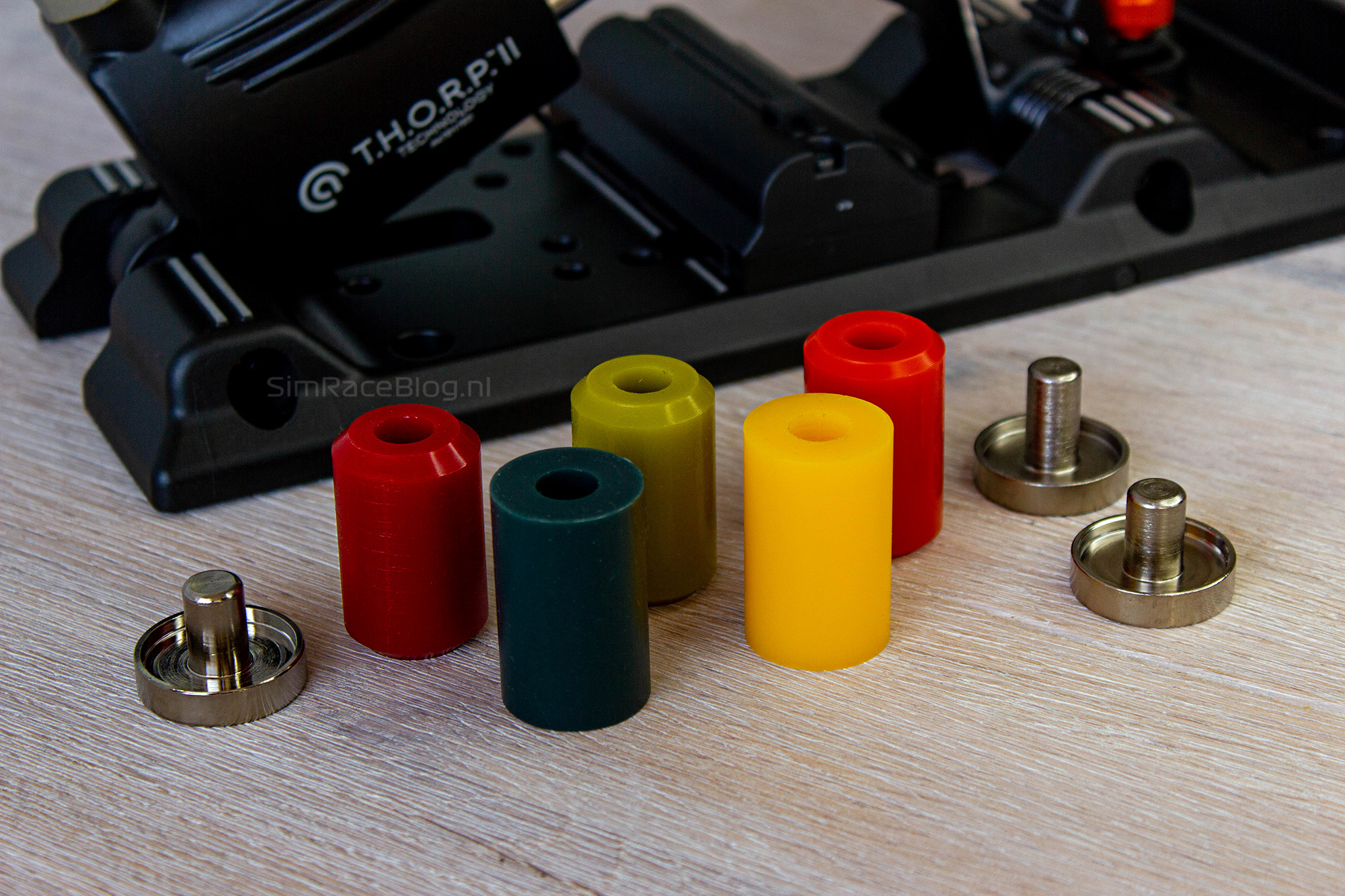
Conclusion
After extensively testing the new T.H.O.R.P. II system on Asetek’s new Invicta pedal set, we can confidently say it’s a solid improvement over the previous version.
We were already fans of the first-generation Invicta pedals, but Asetek has taken things to the next level with this update. The two-stage braking system works exceptionally well, offering much better control during trail braking thanks to the pedal’s increased travel. The brake pressure buildup feels more natural, while the second phase still retains the firm stop we’re used to. One minor drawback is the audible “click” when the two metal end caps touch. It’s not overly distracting, but it is an additional sound coming from your hardware.
Aside from its improved functionality, the new T.H.O.R.P. II design also brings practical benefits. Swapping out the elastomers is incredibly easy and takes just seconds. There’s also a good variety of elastomers to choose from, plus the option to shorten the pedal travel using the extended metal end cap. However, the new housing does present a slight issue when mounting the S-Series Invicta pedals. The preparation for the future ABS system—something we’re very curious about—sits directly above one of the four mounting holes, making it unusable. That said, even with just three screws, the brake pedal remains securely in place.
If this review has made you consider upgrading to the latest Invicta pedal set, you can purchase it from Asetek’s webshop. The S-Series is available for €1028.49, while the standard set costs €967.99. Both prices include VAT but exclude shipping.
Do you want to stay informed about SimRaceBlog content, news, announcements and (future) give-aways? Follow us on Instagram @simraceblognl and/or our Discord channel.
